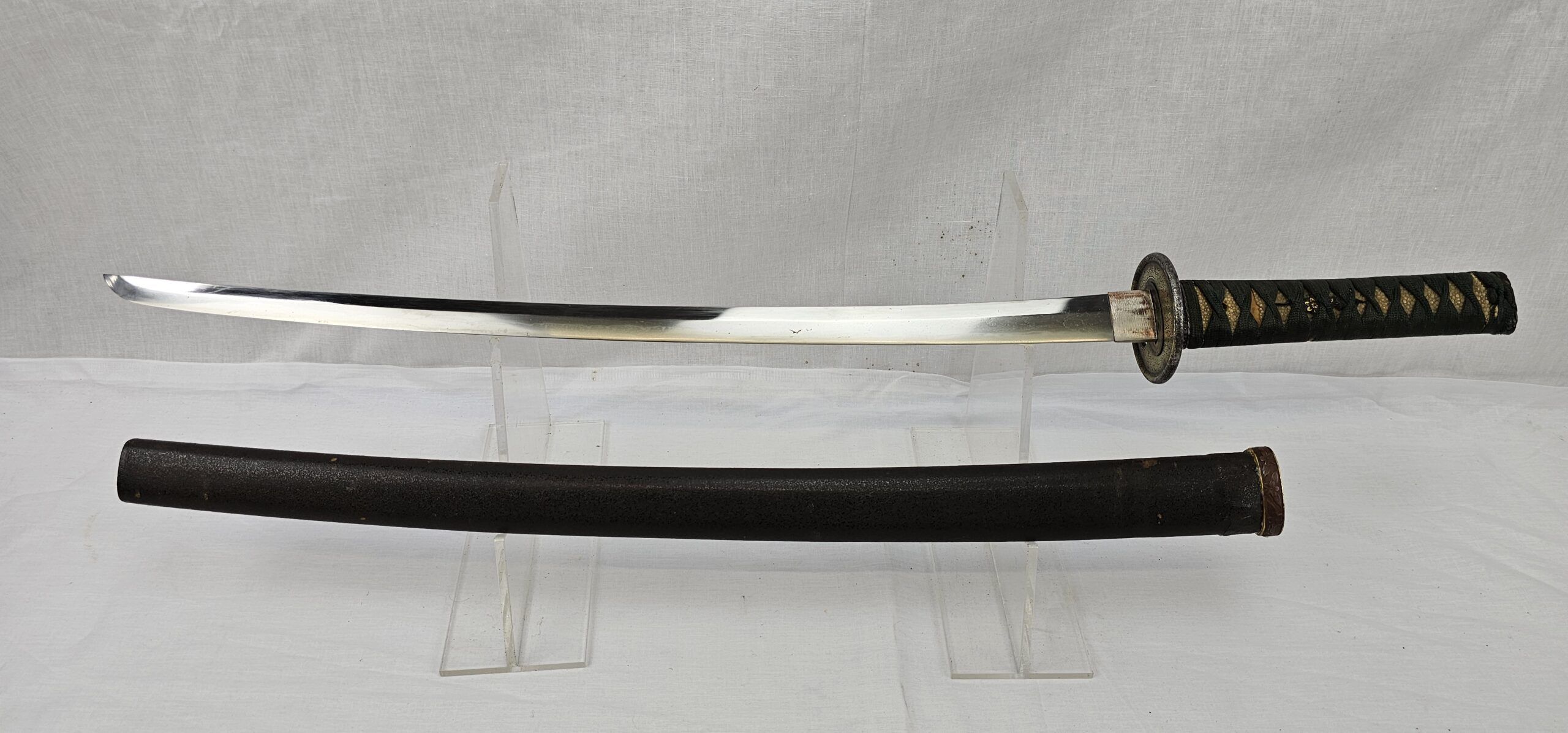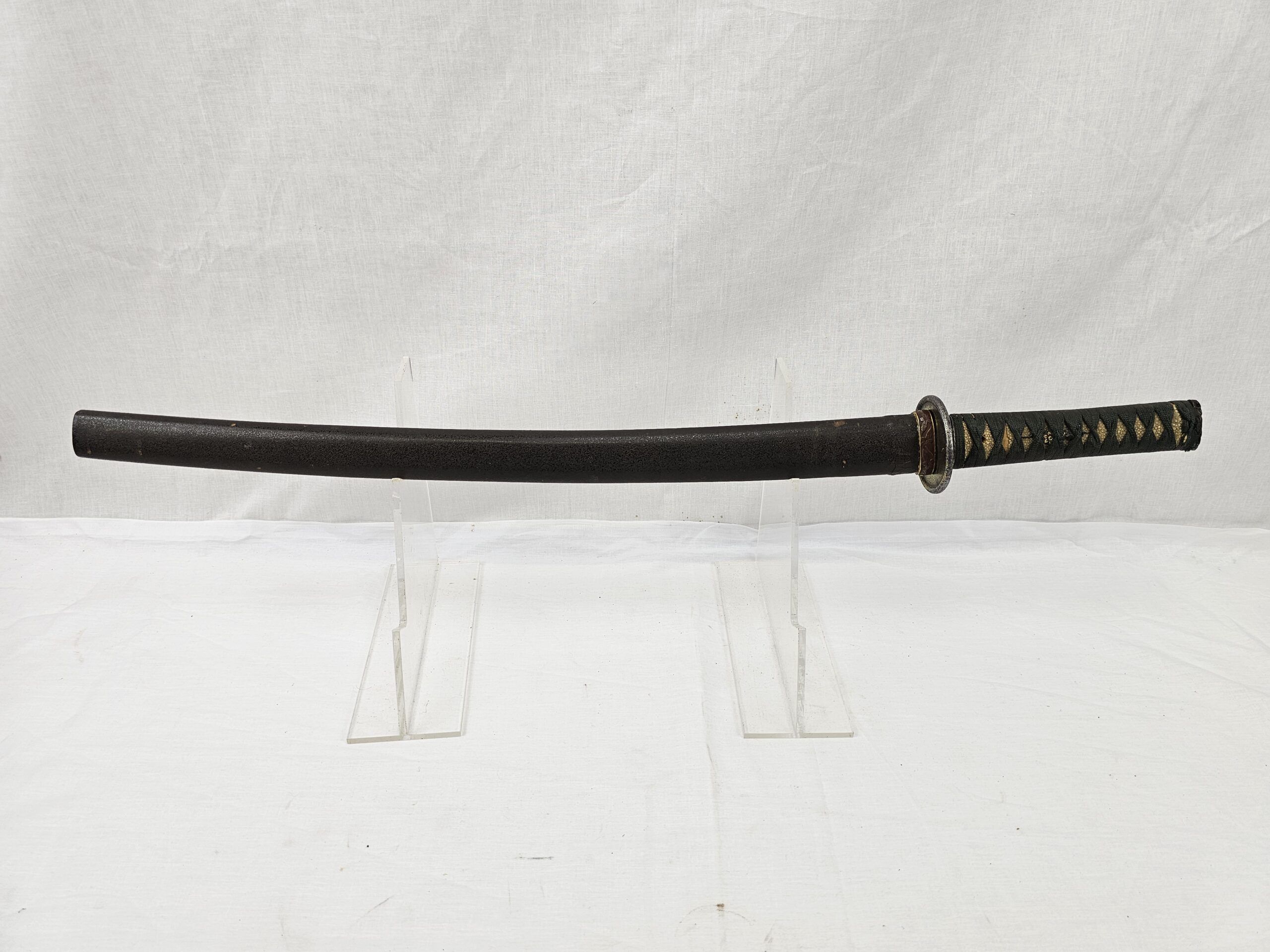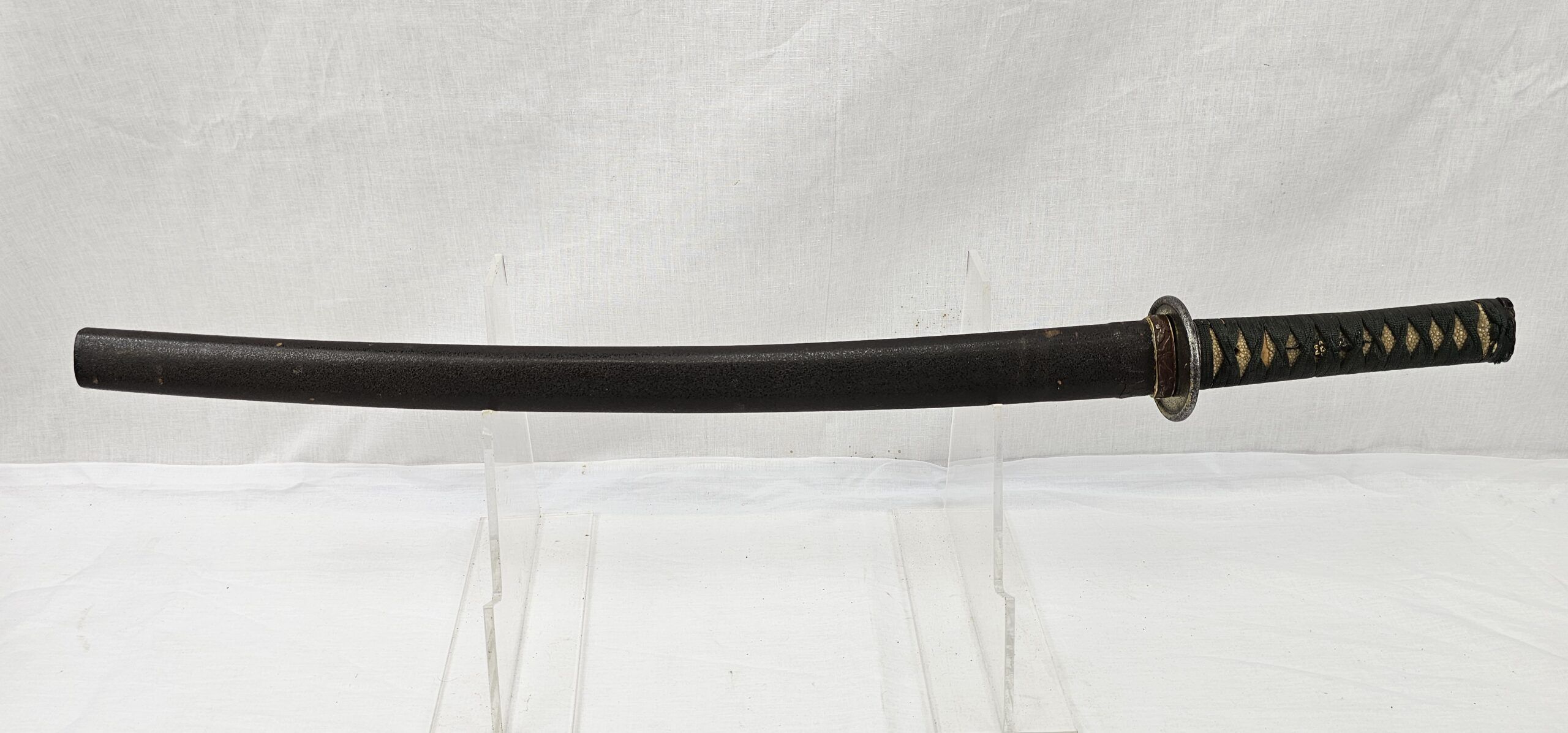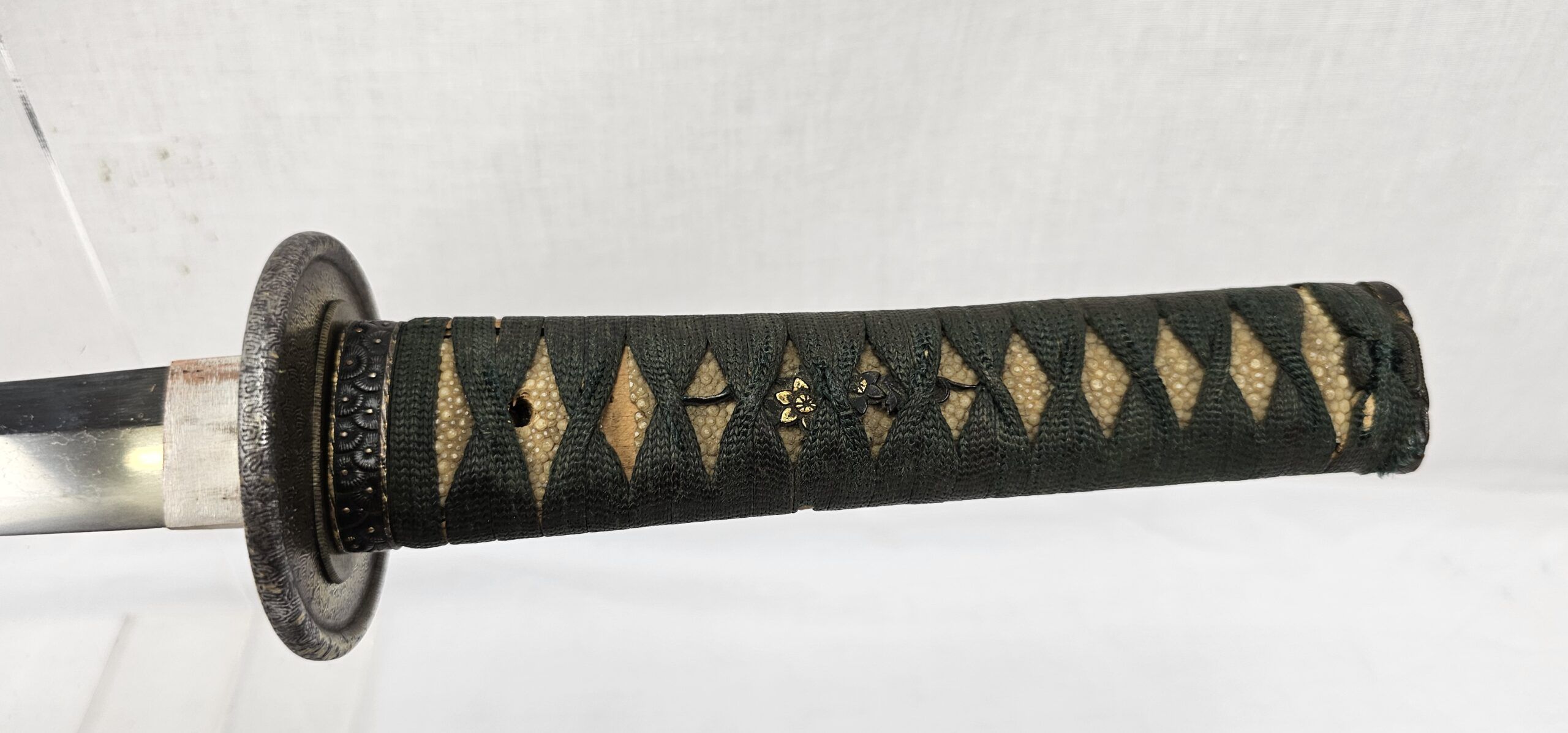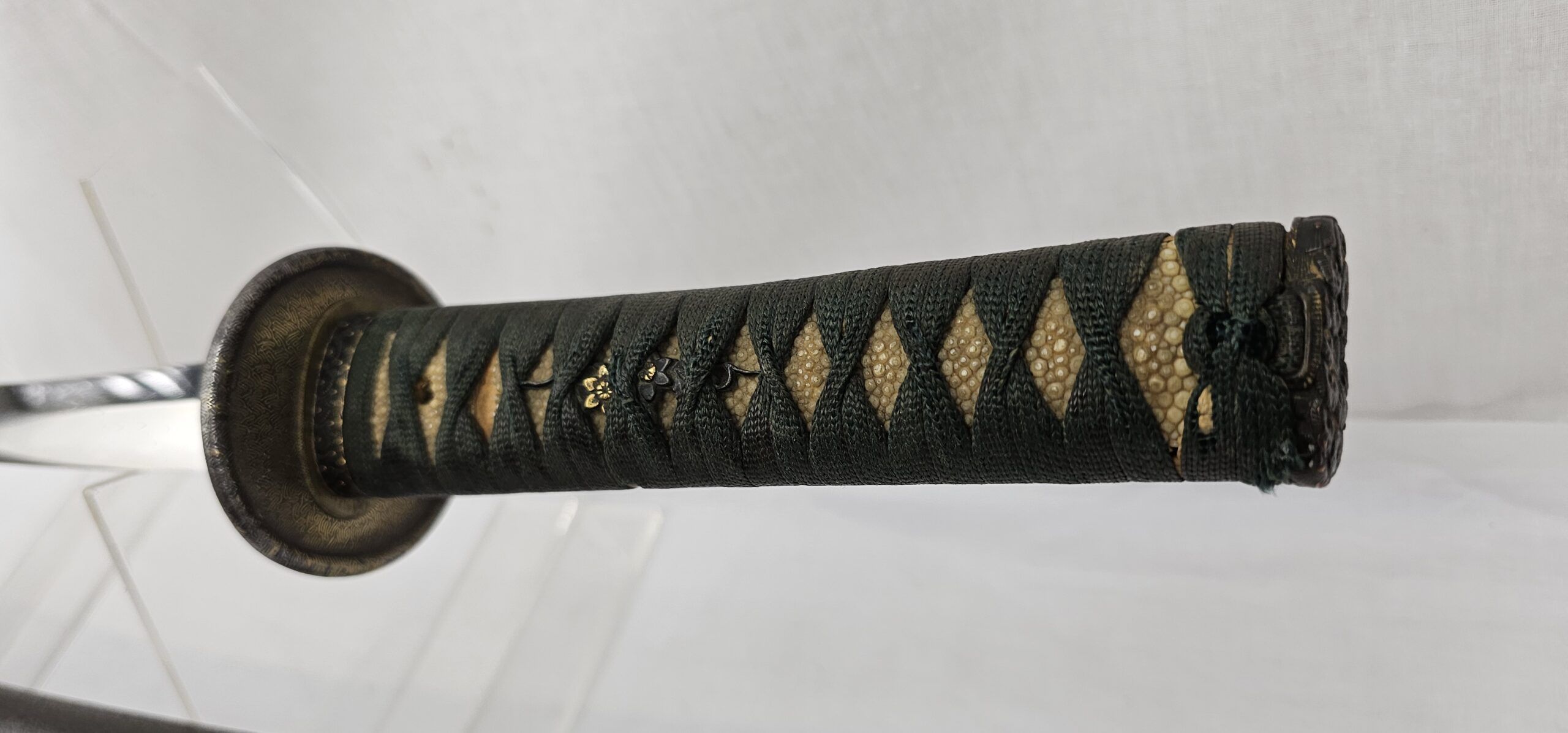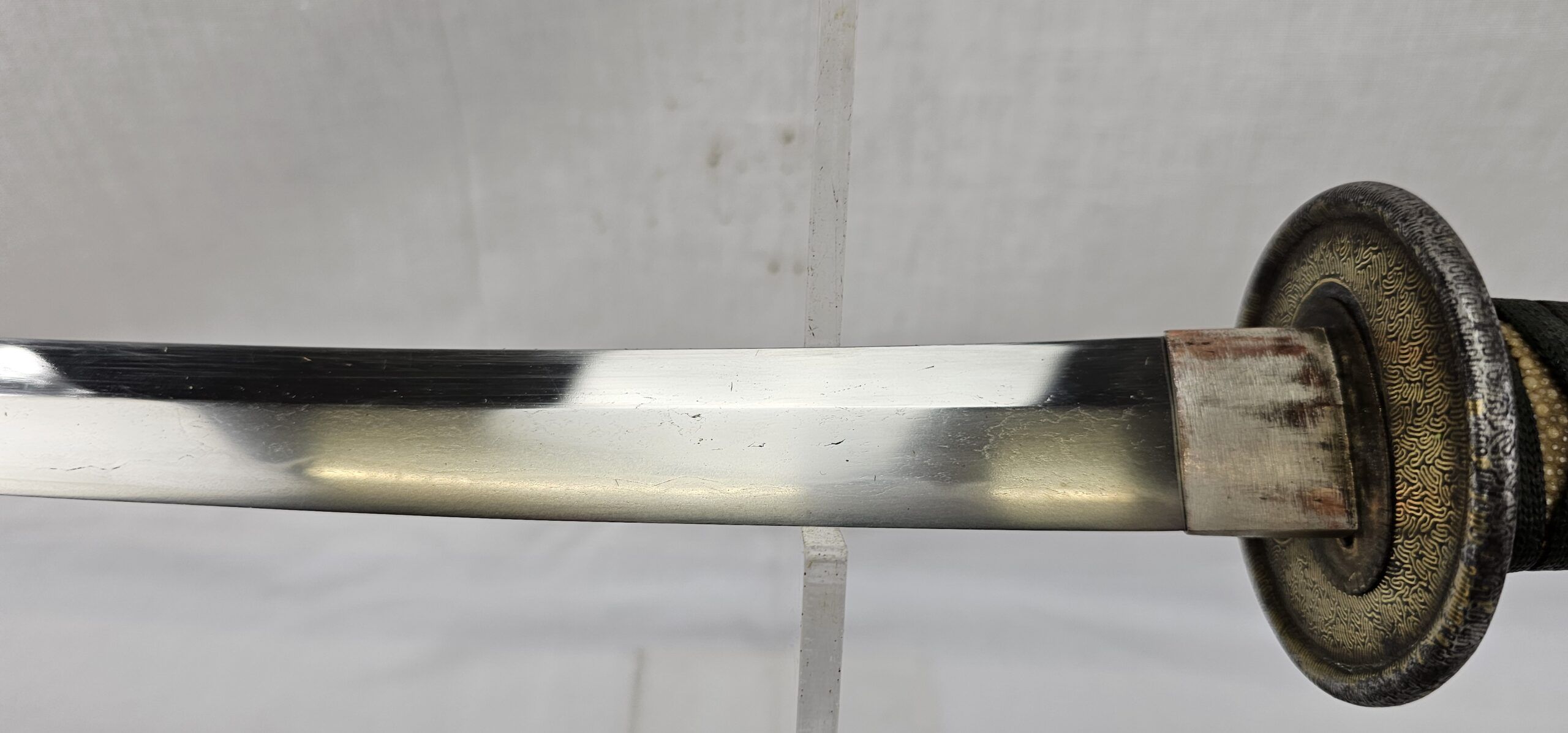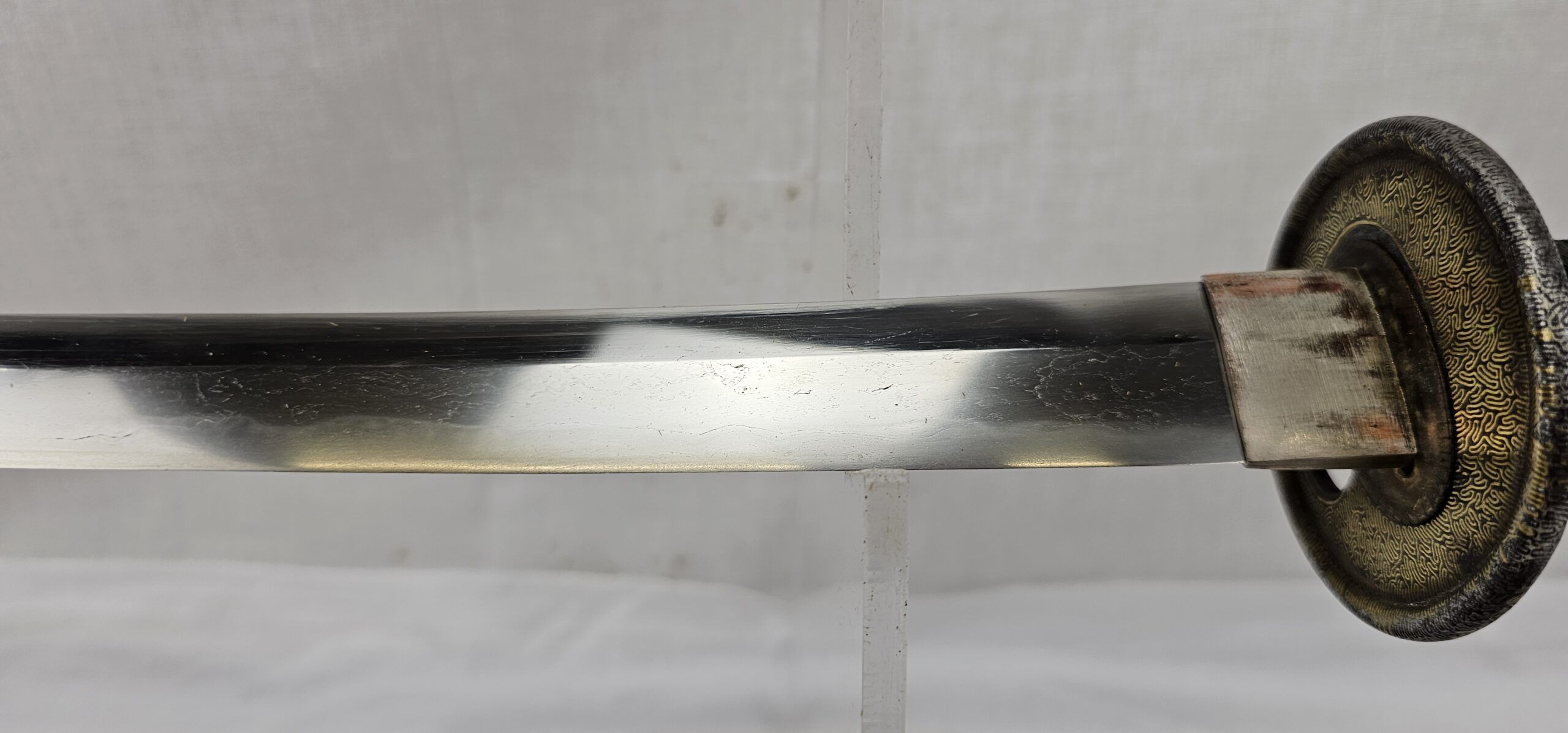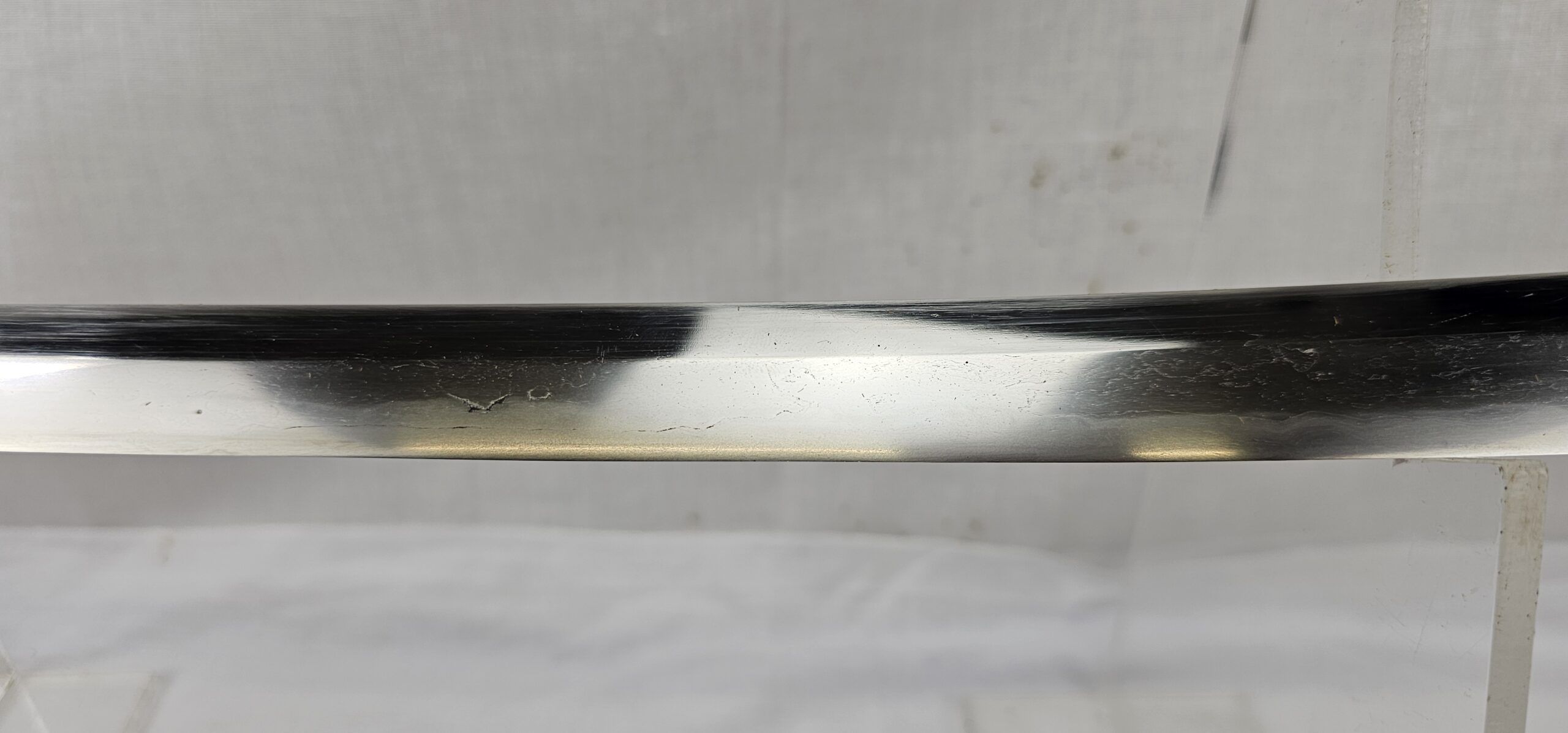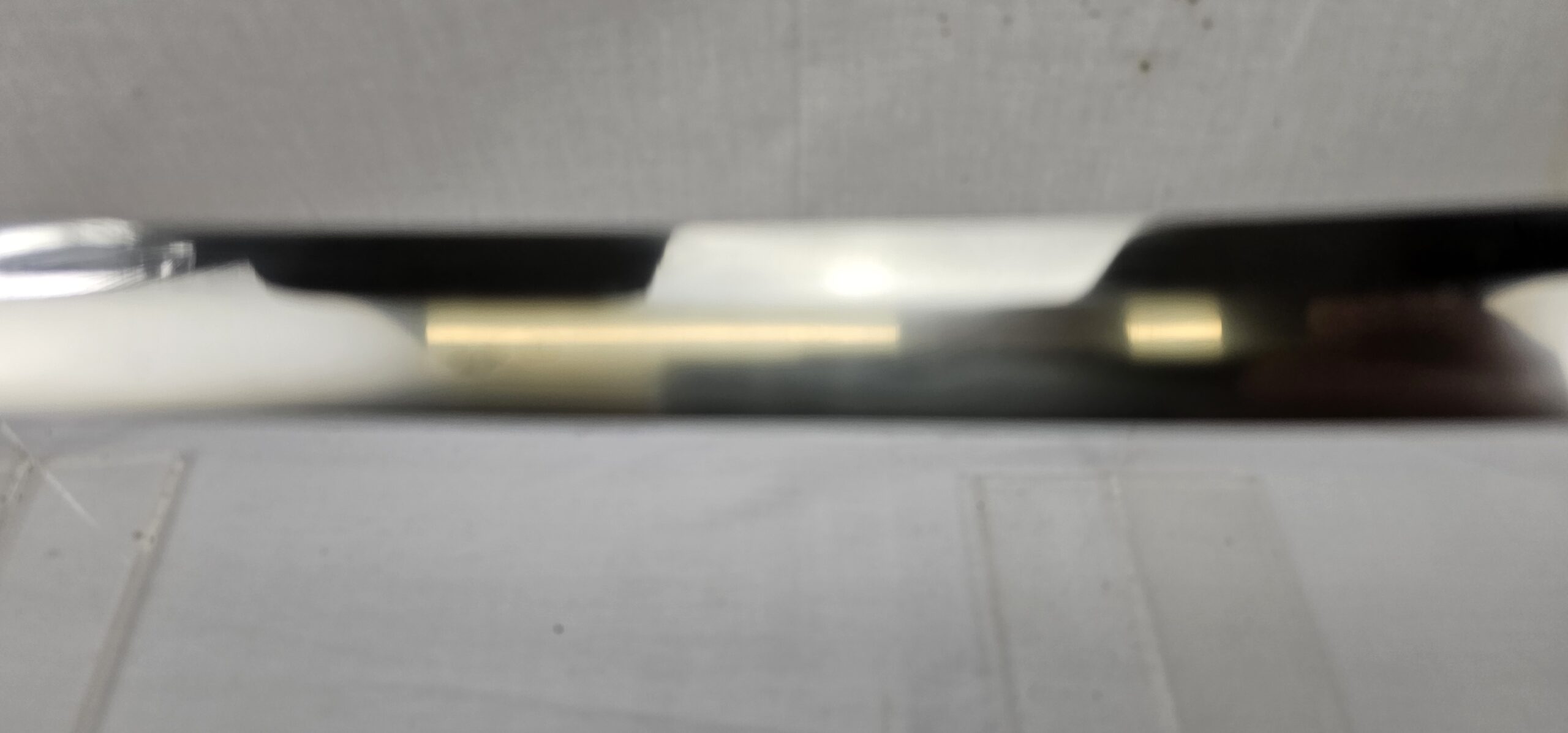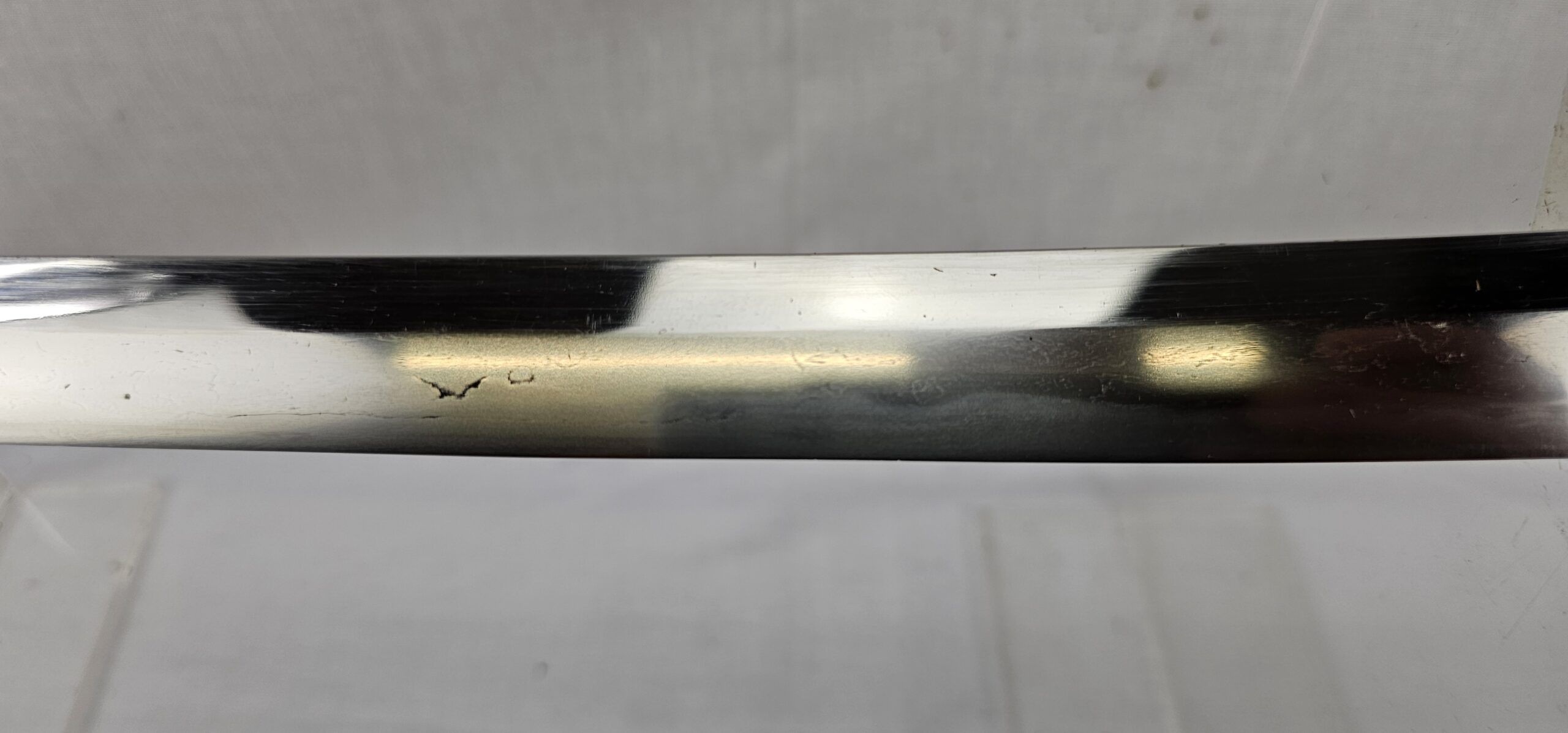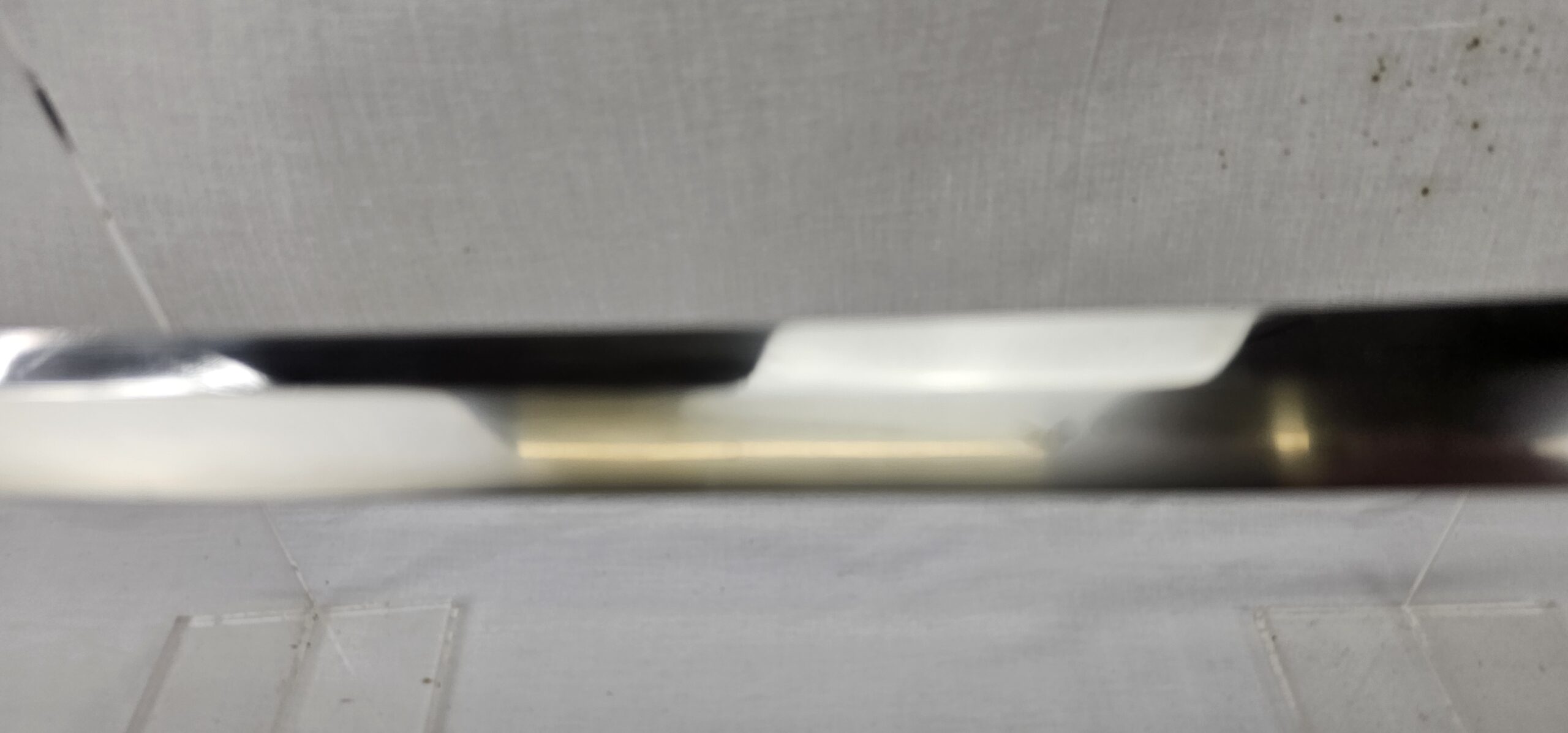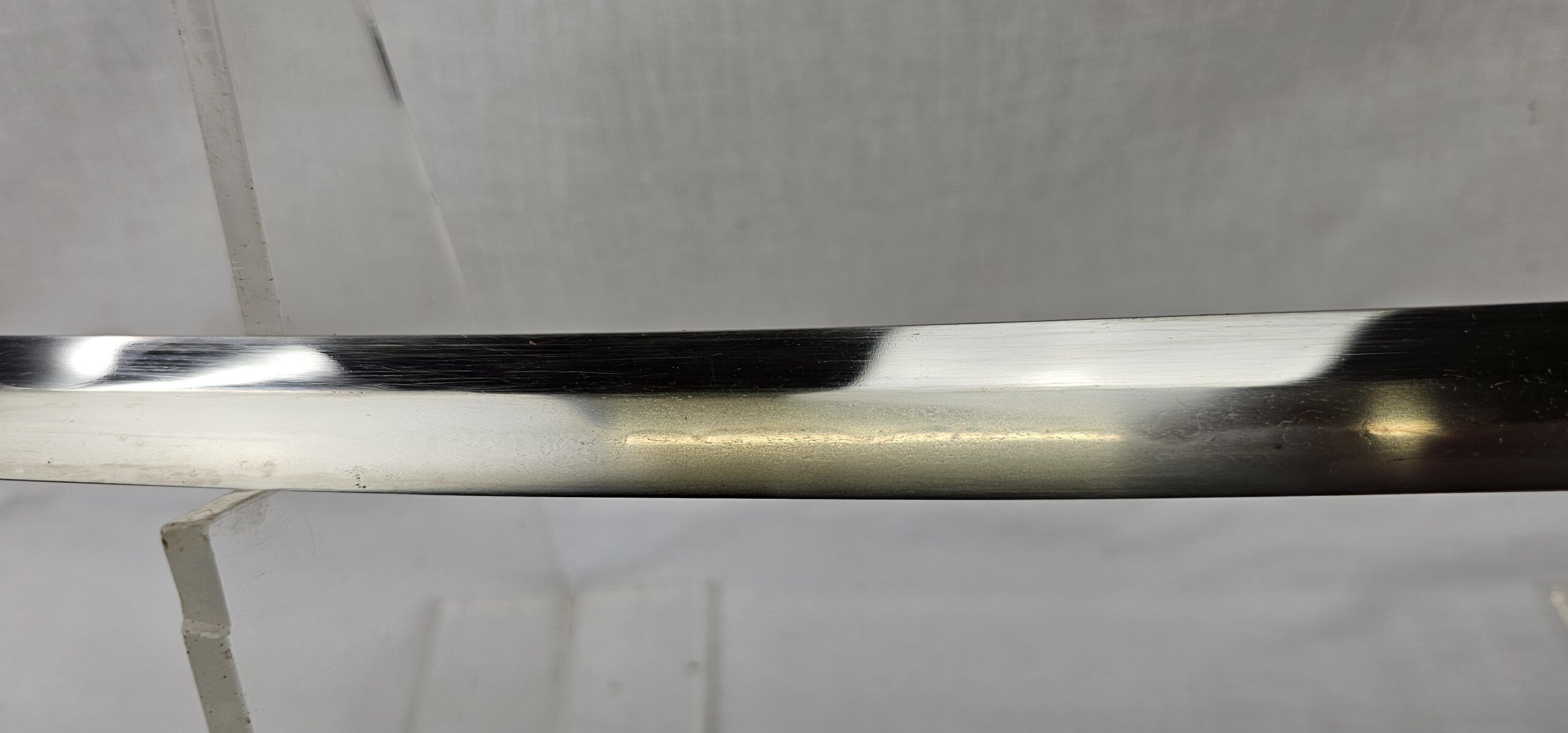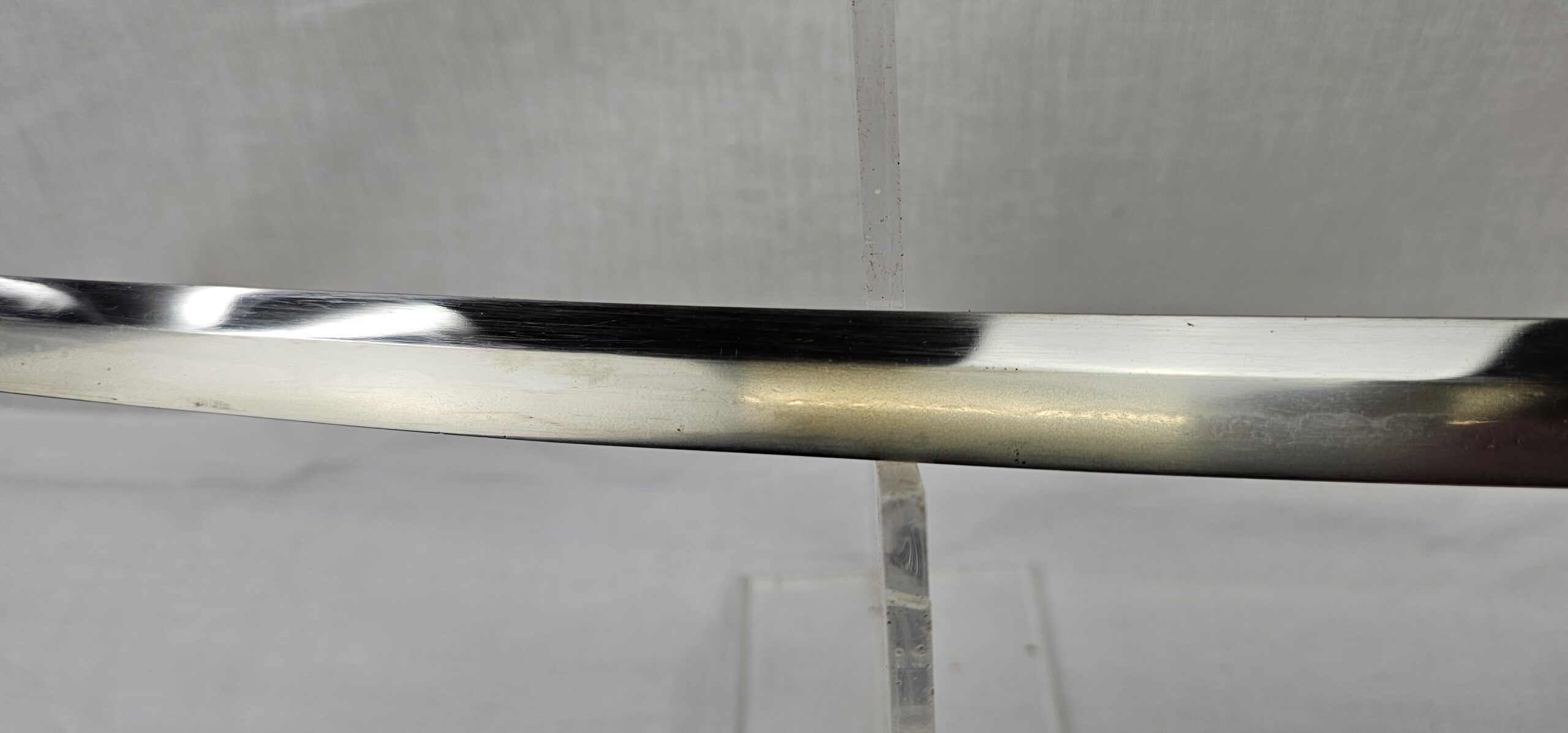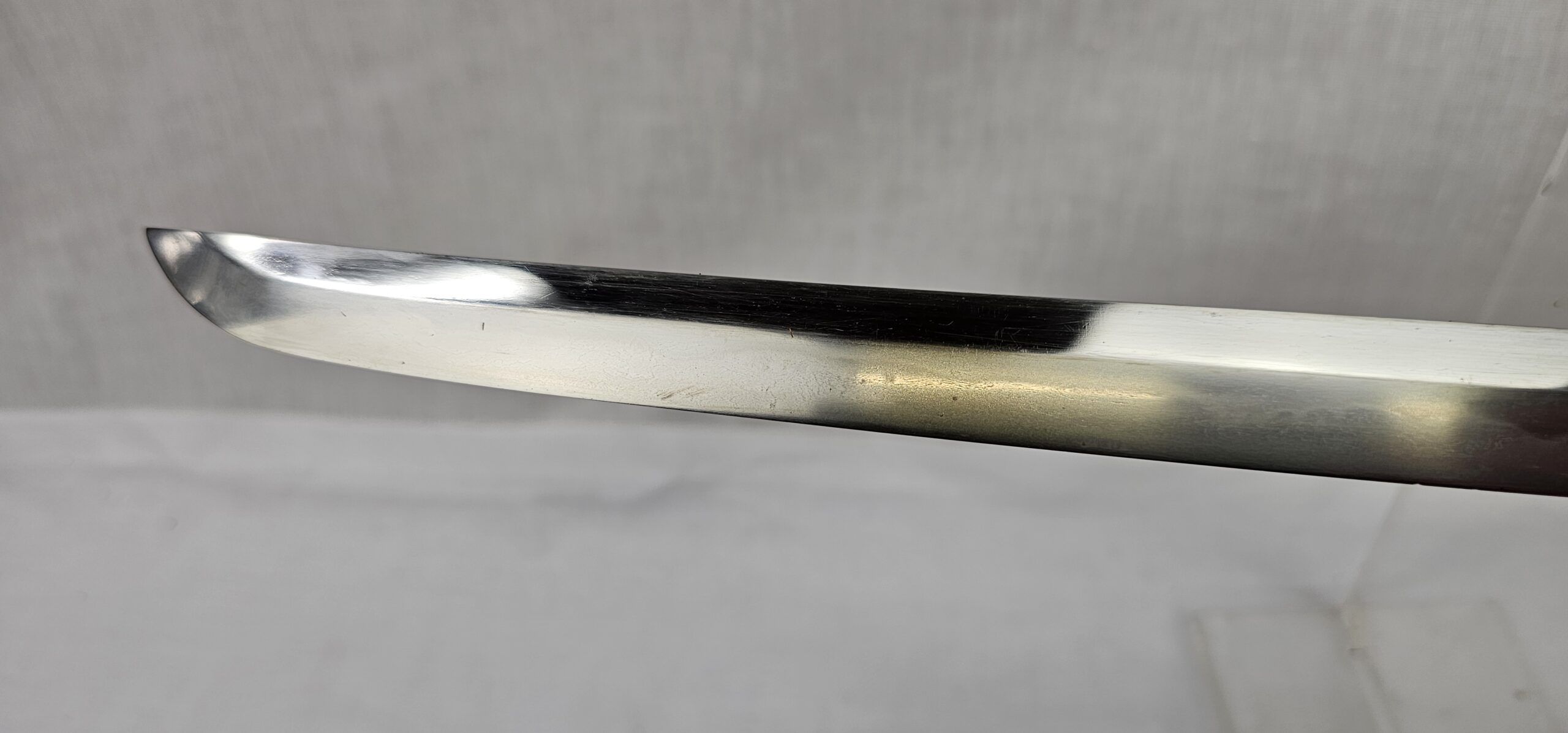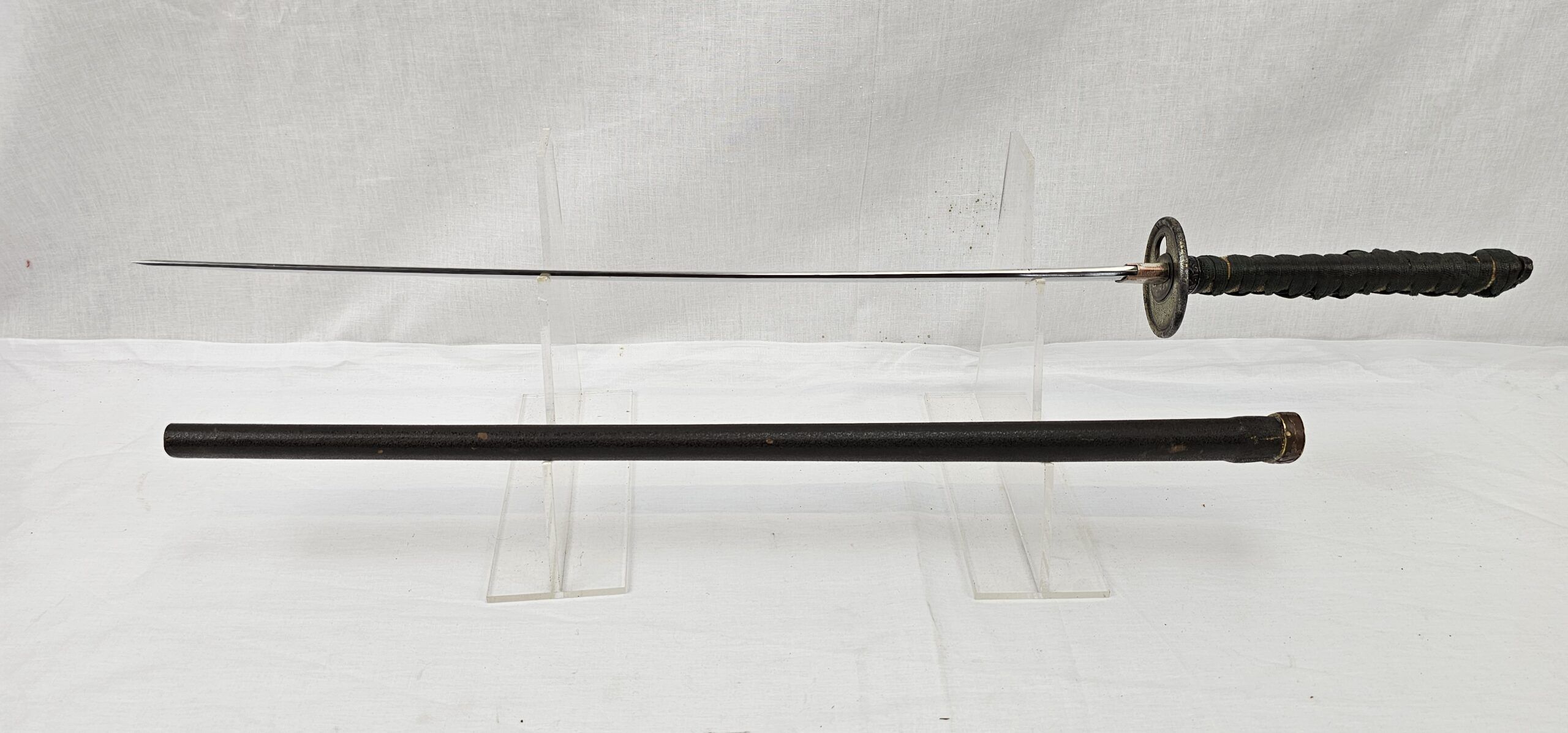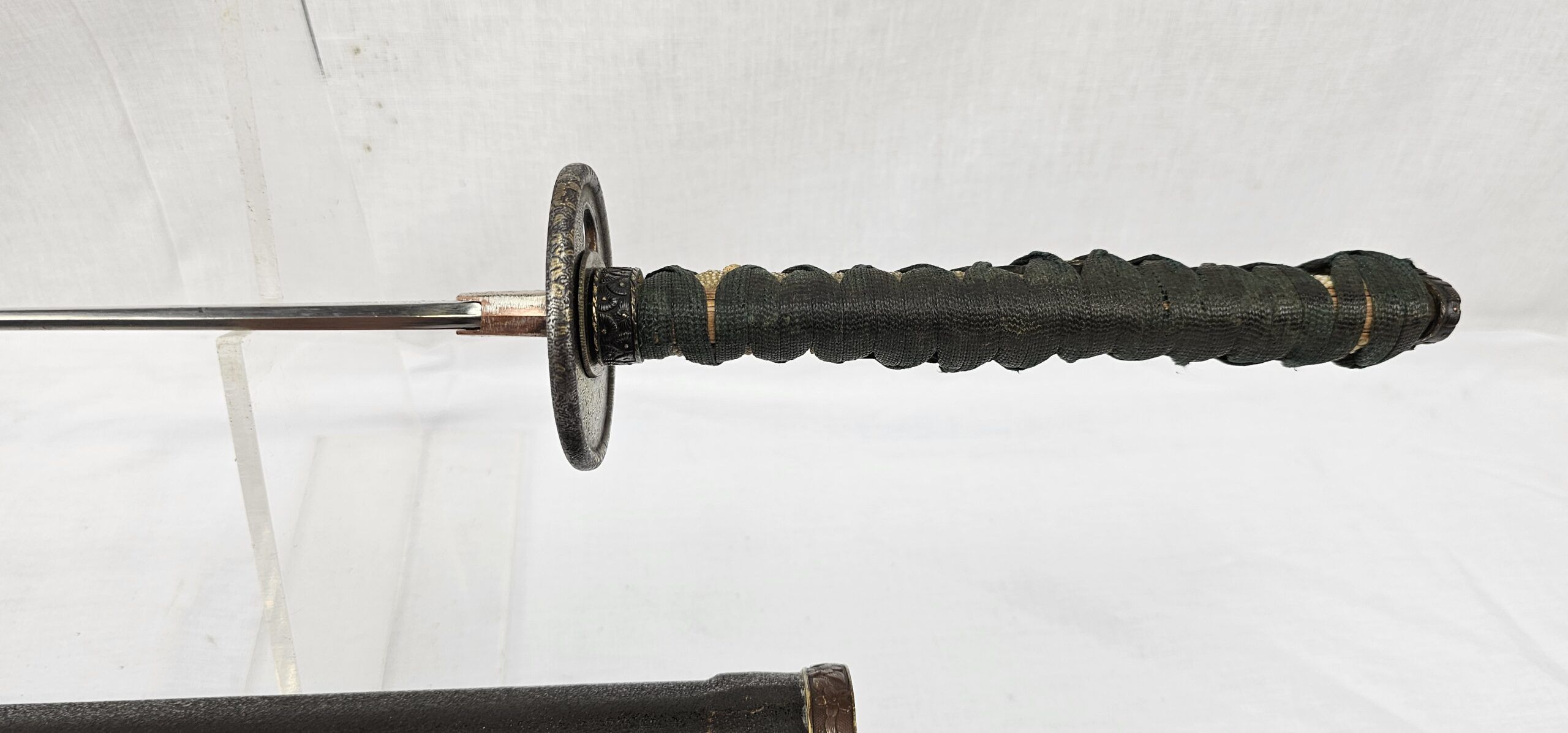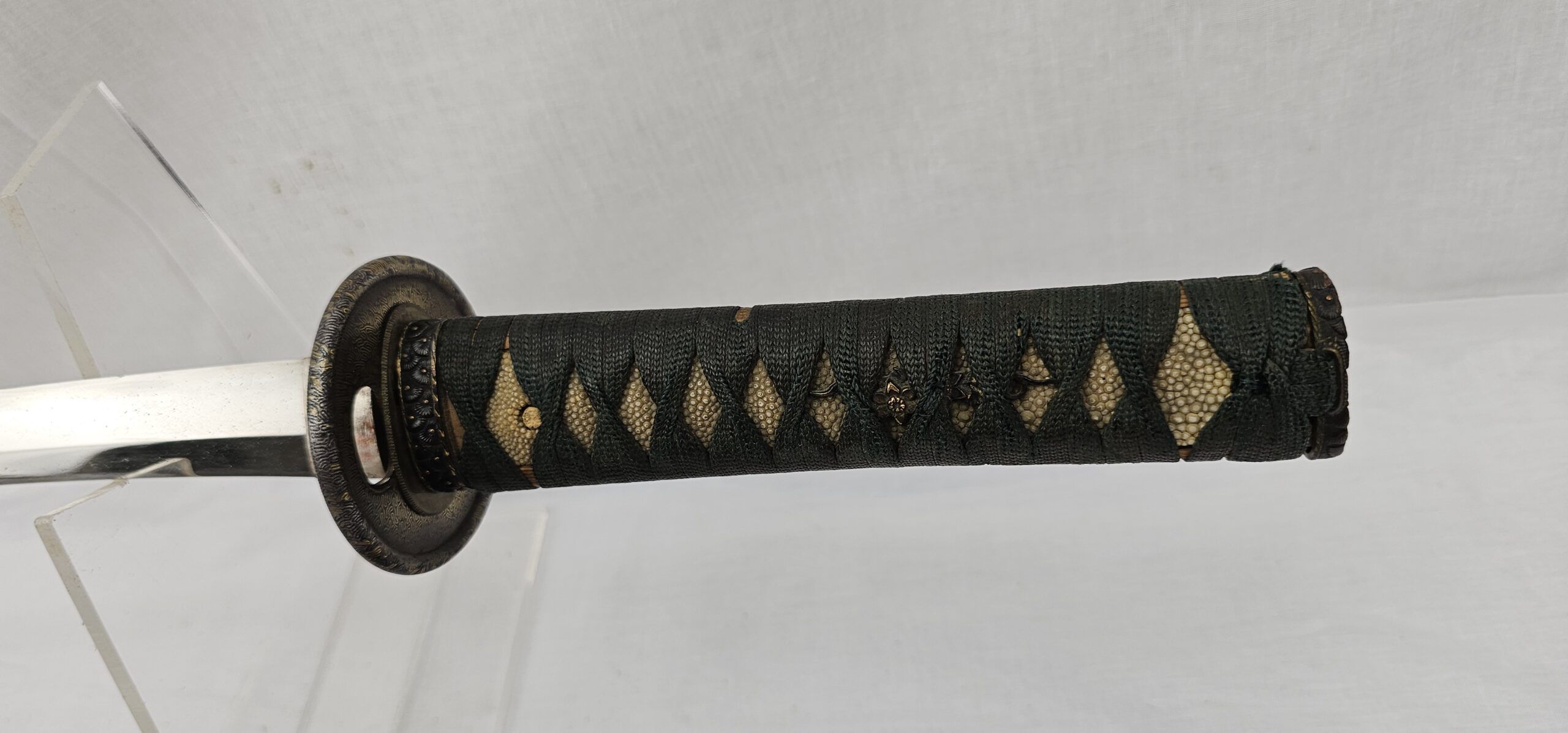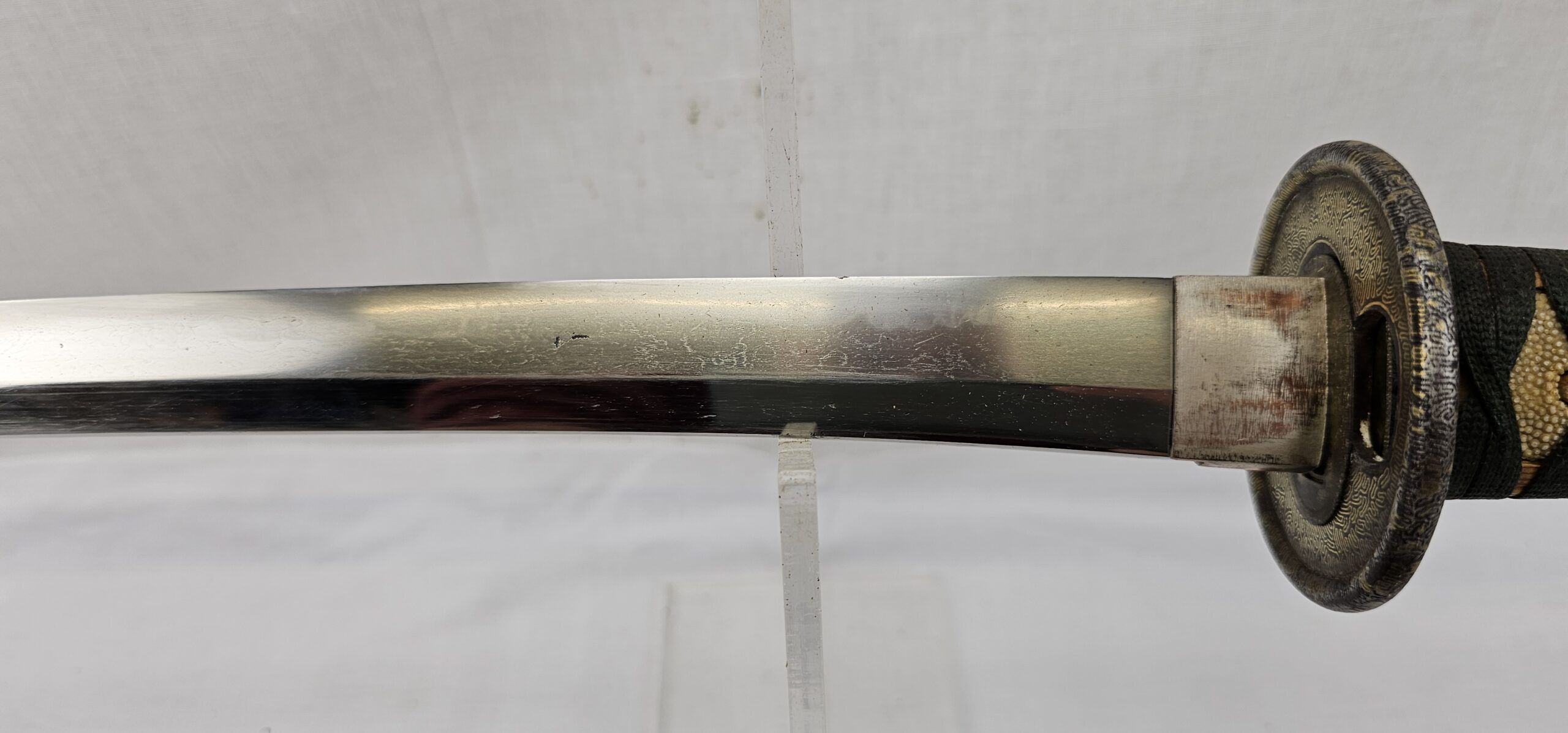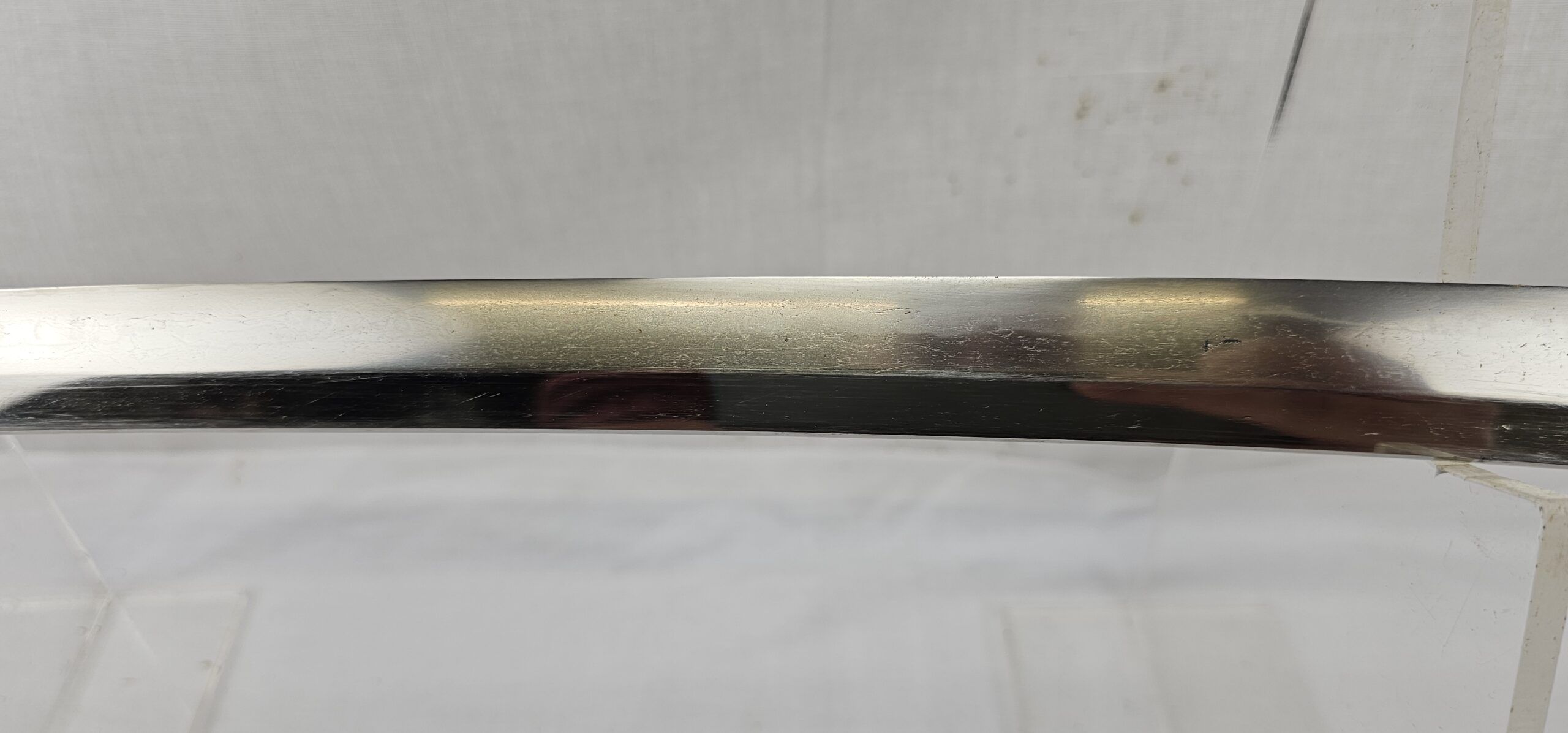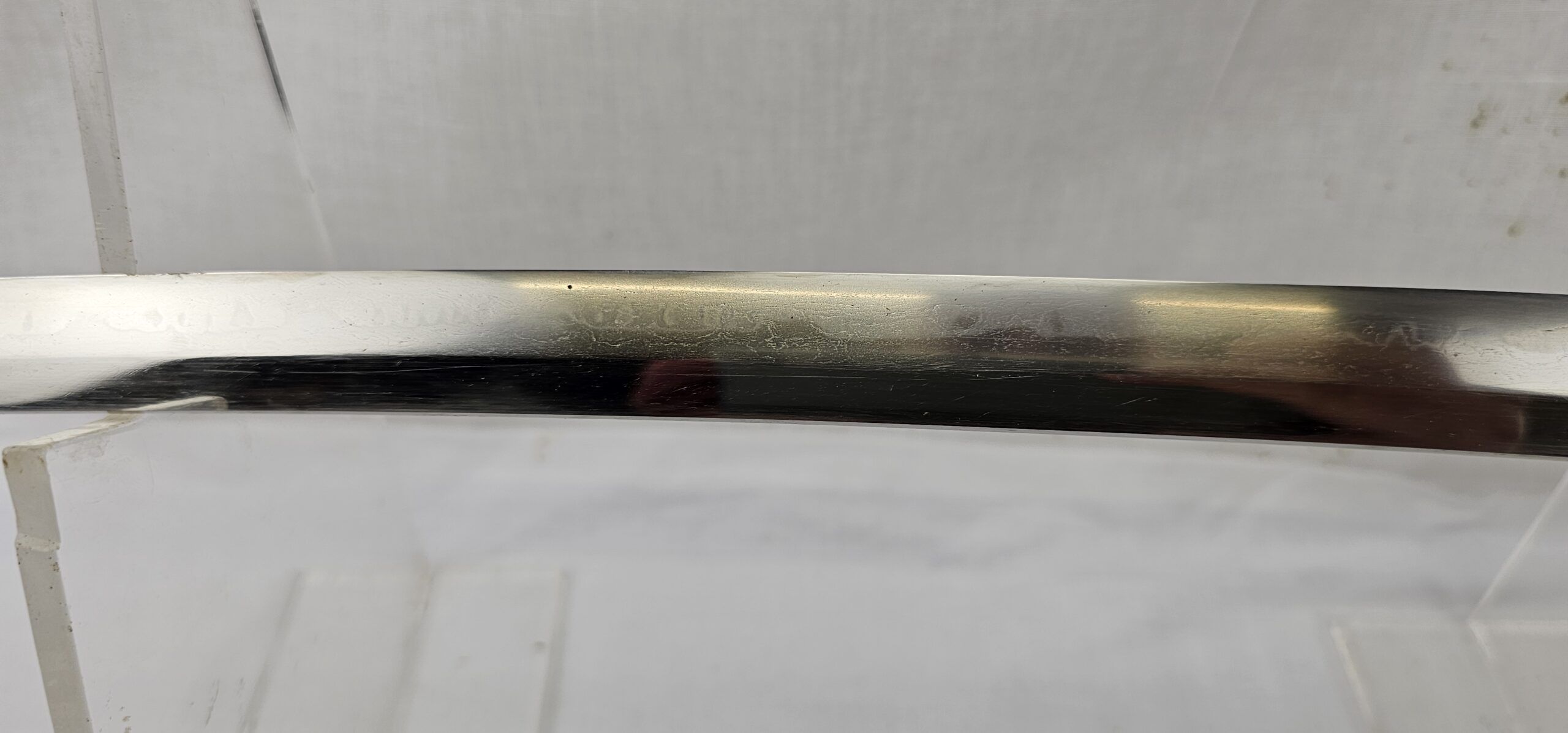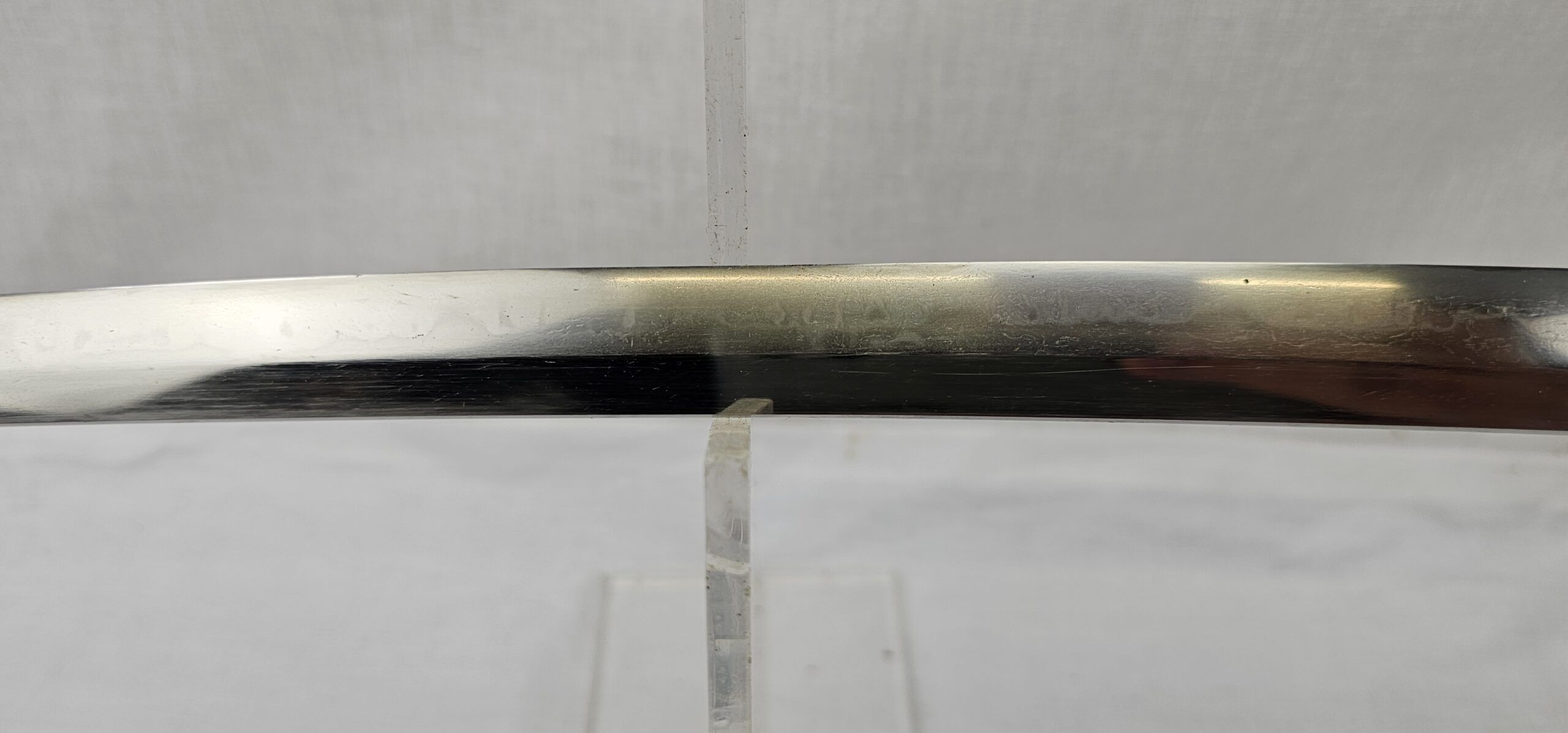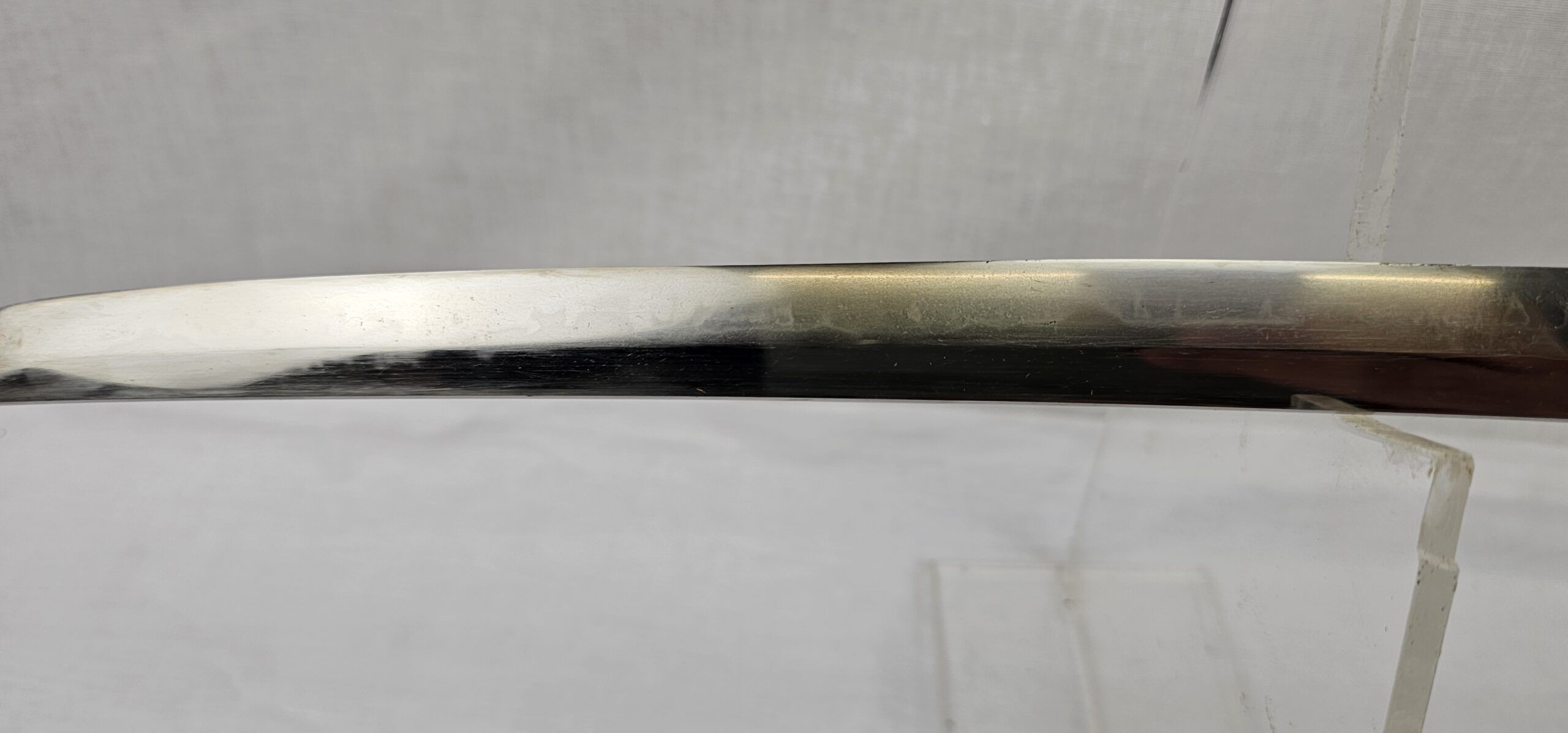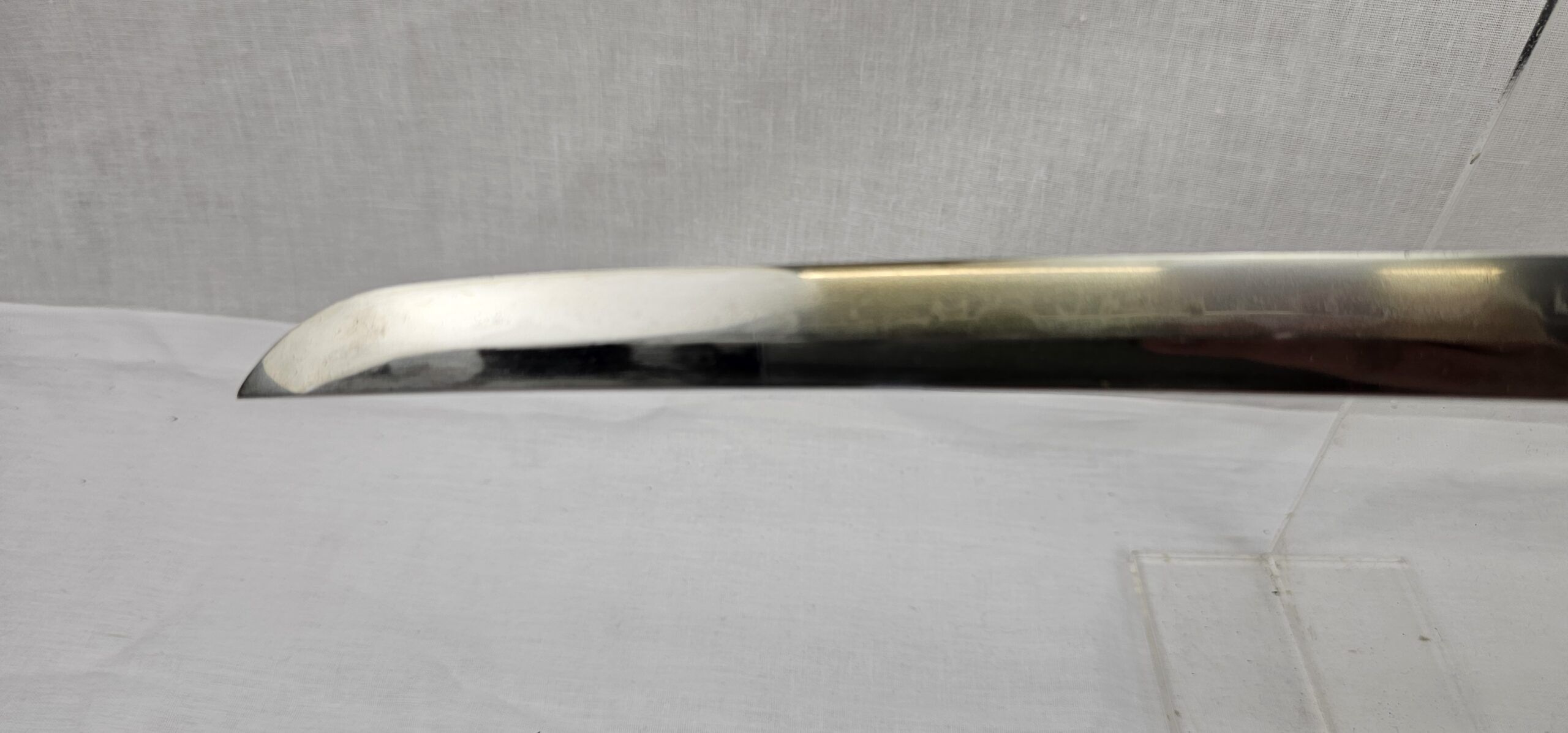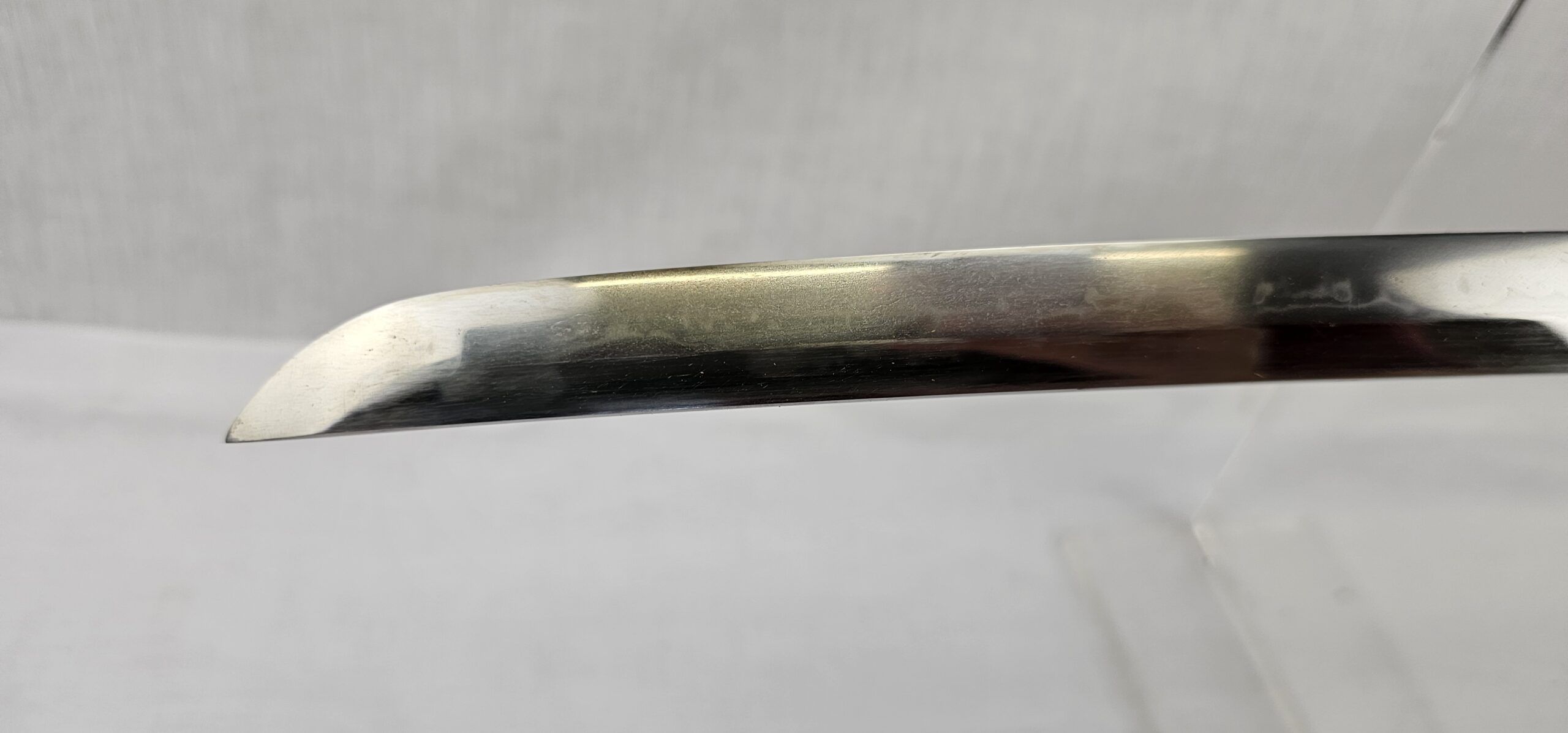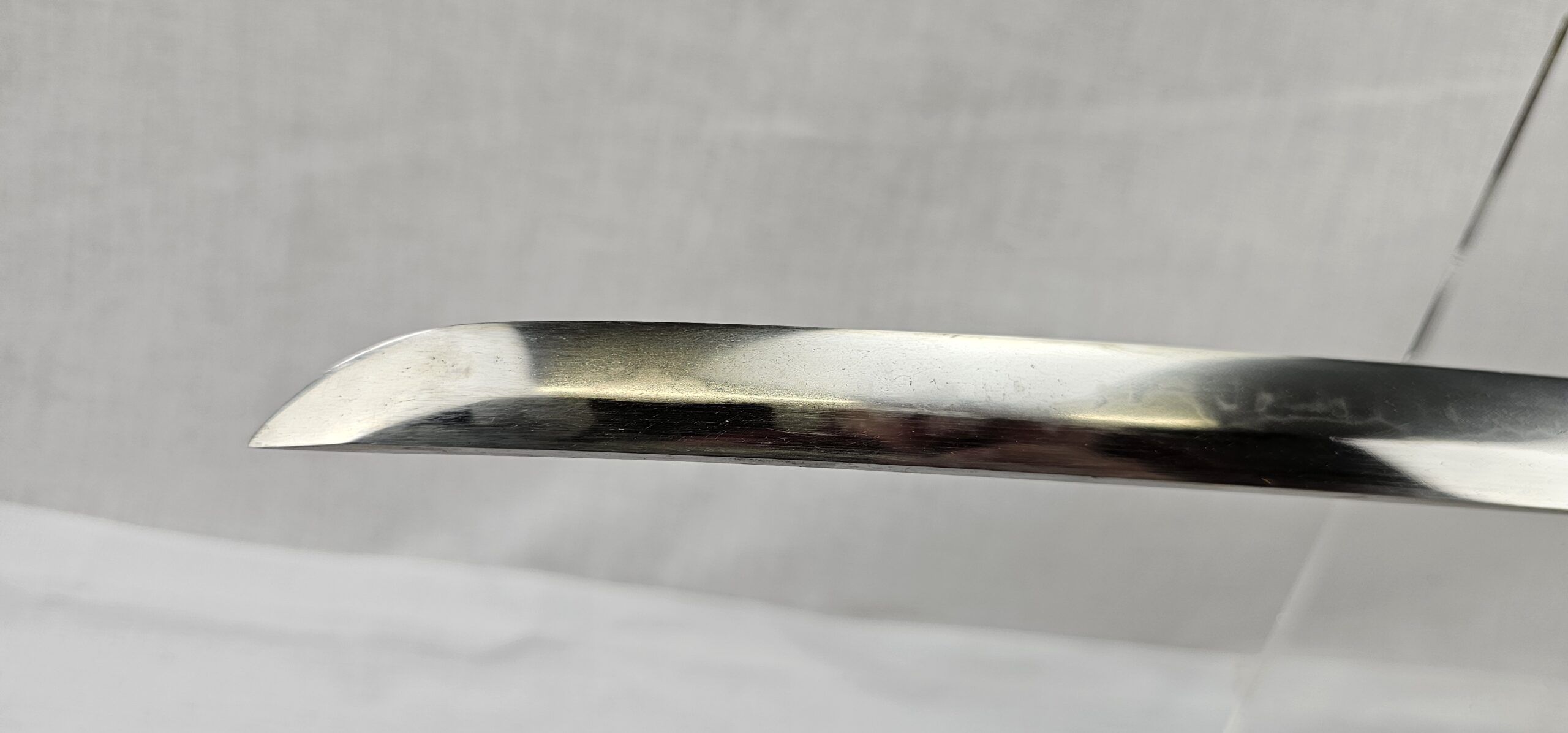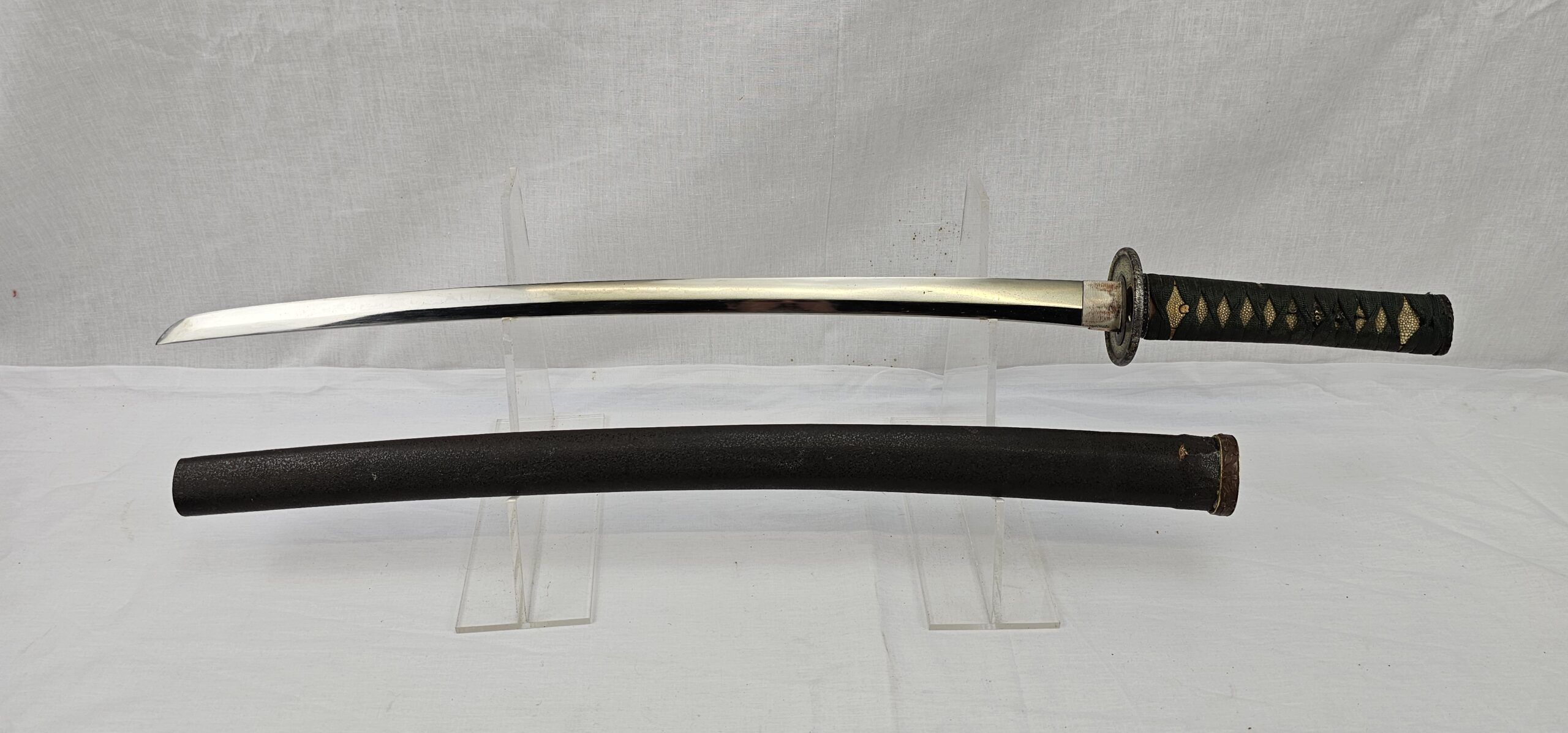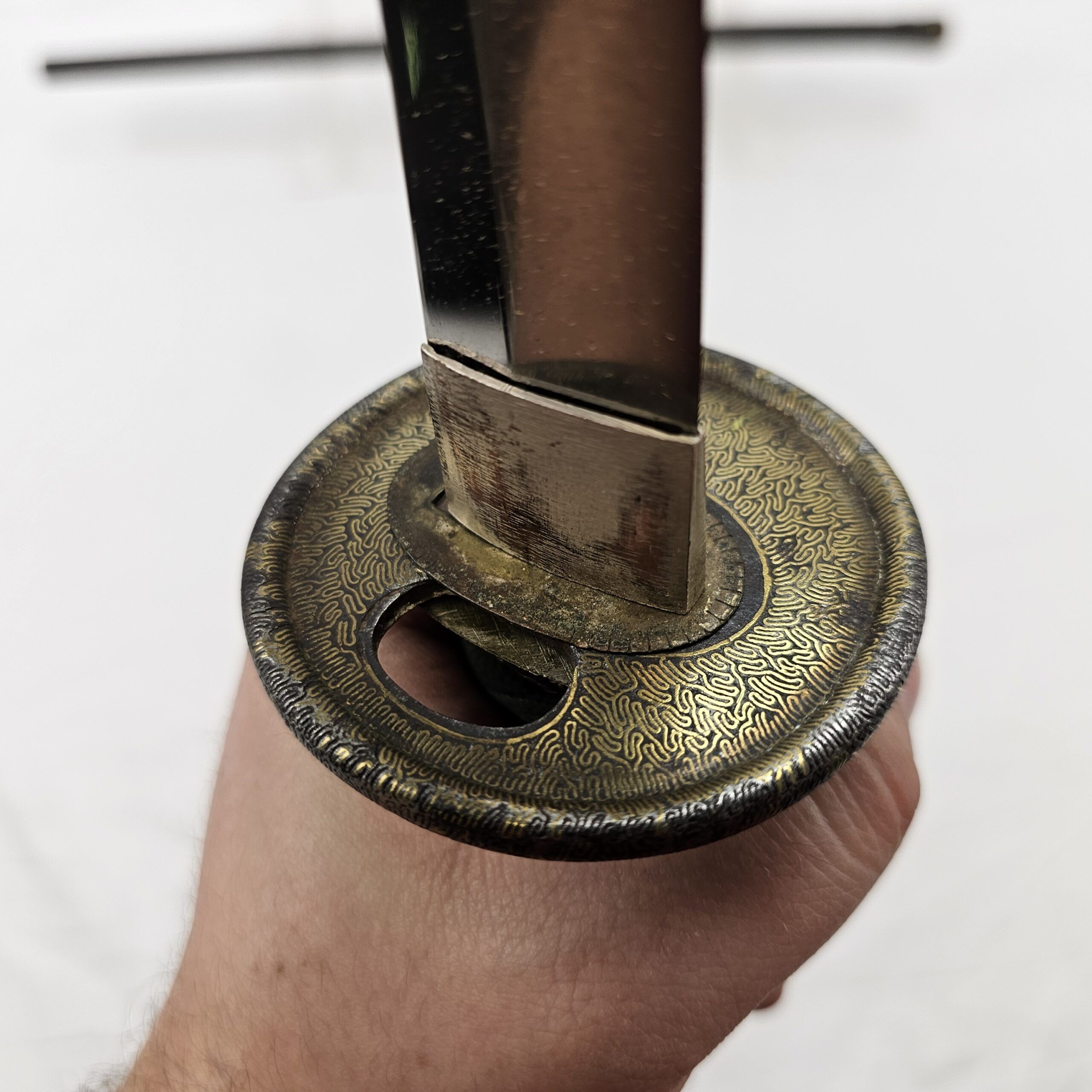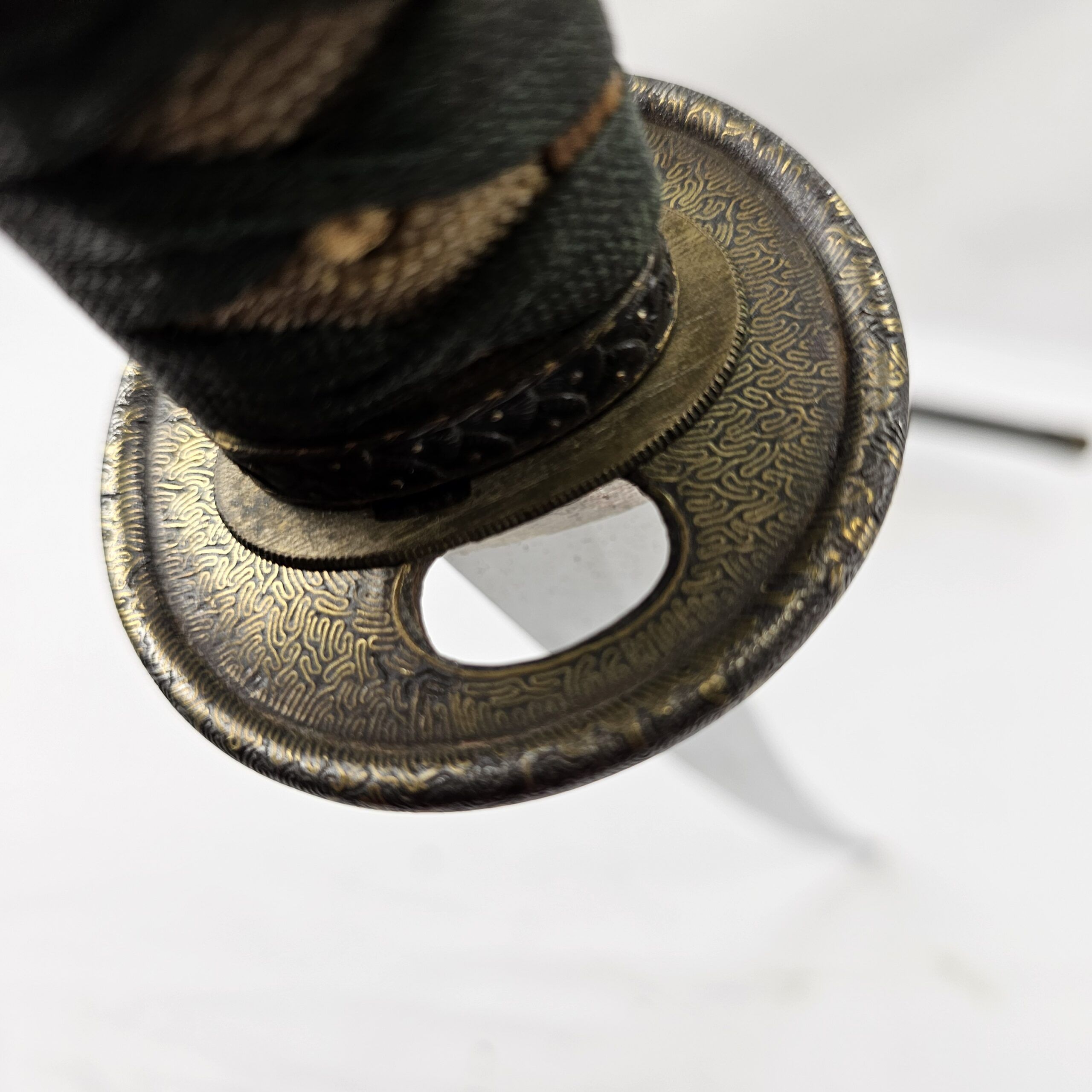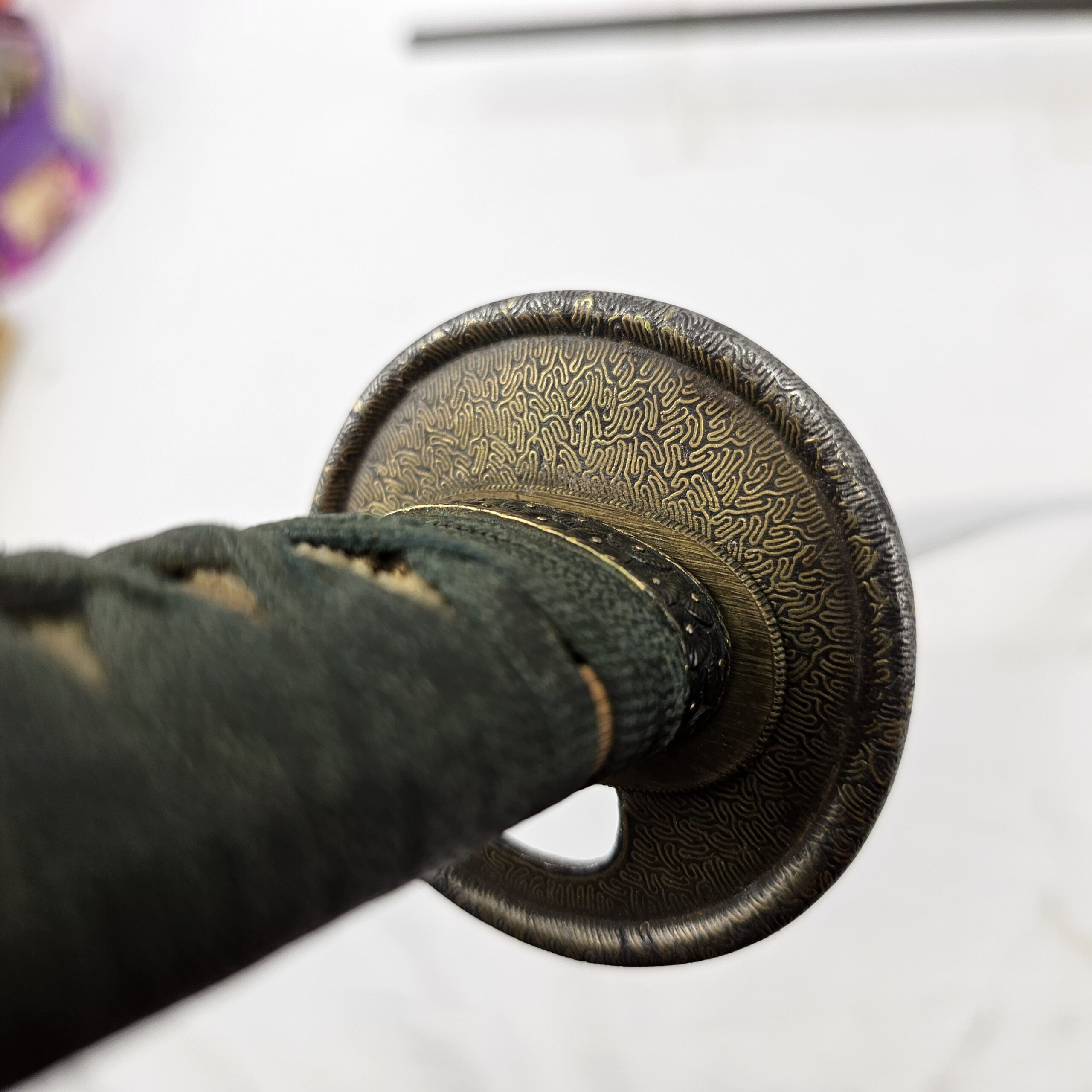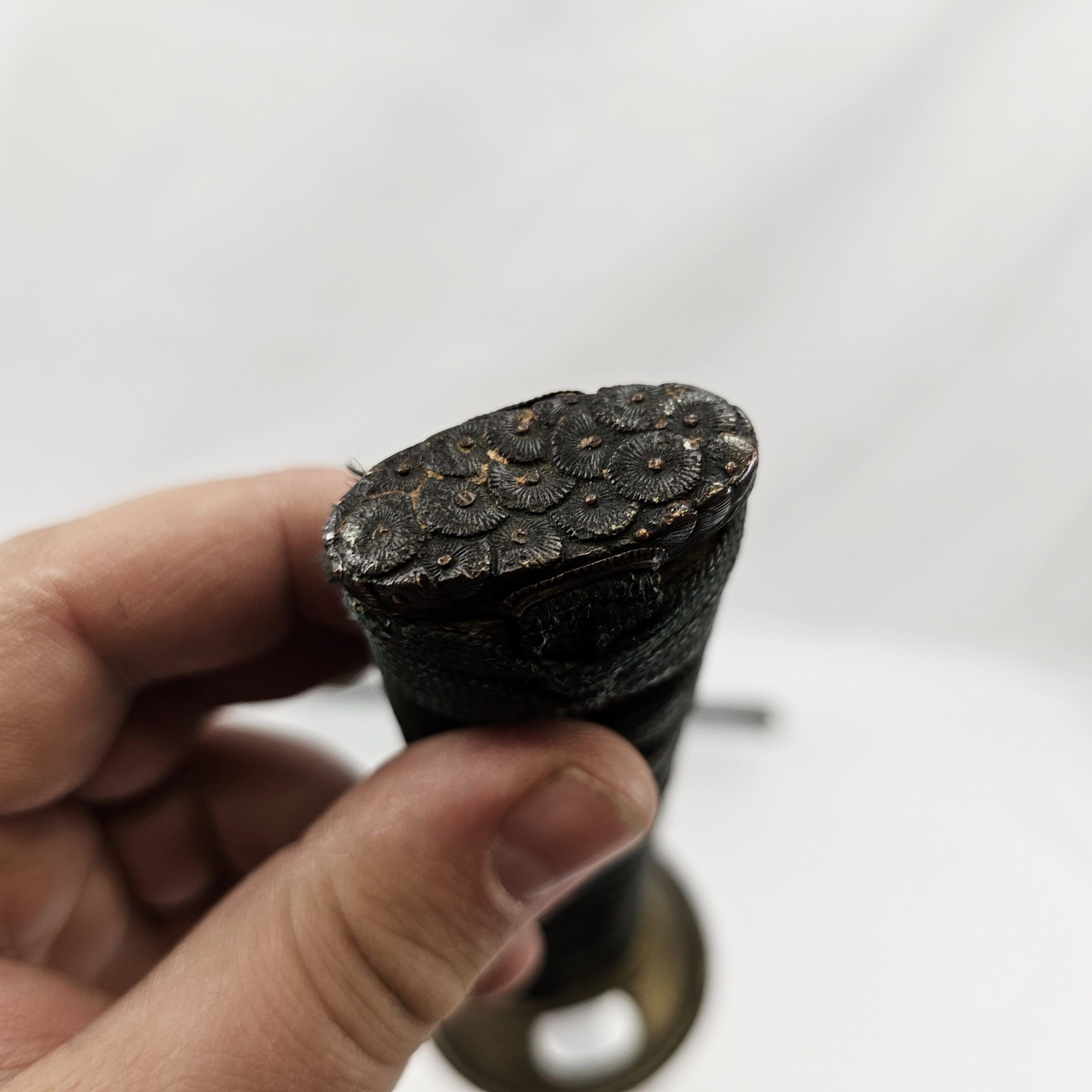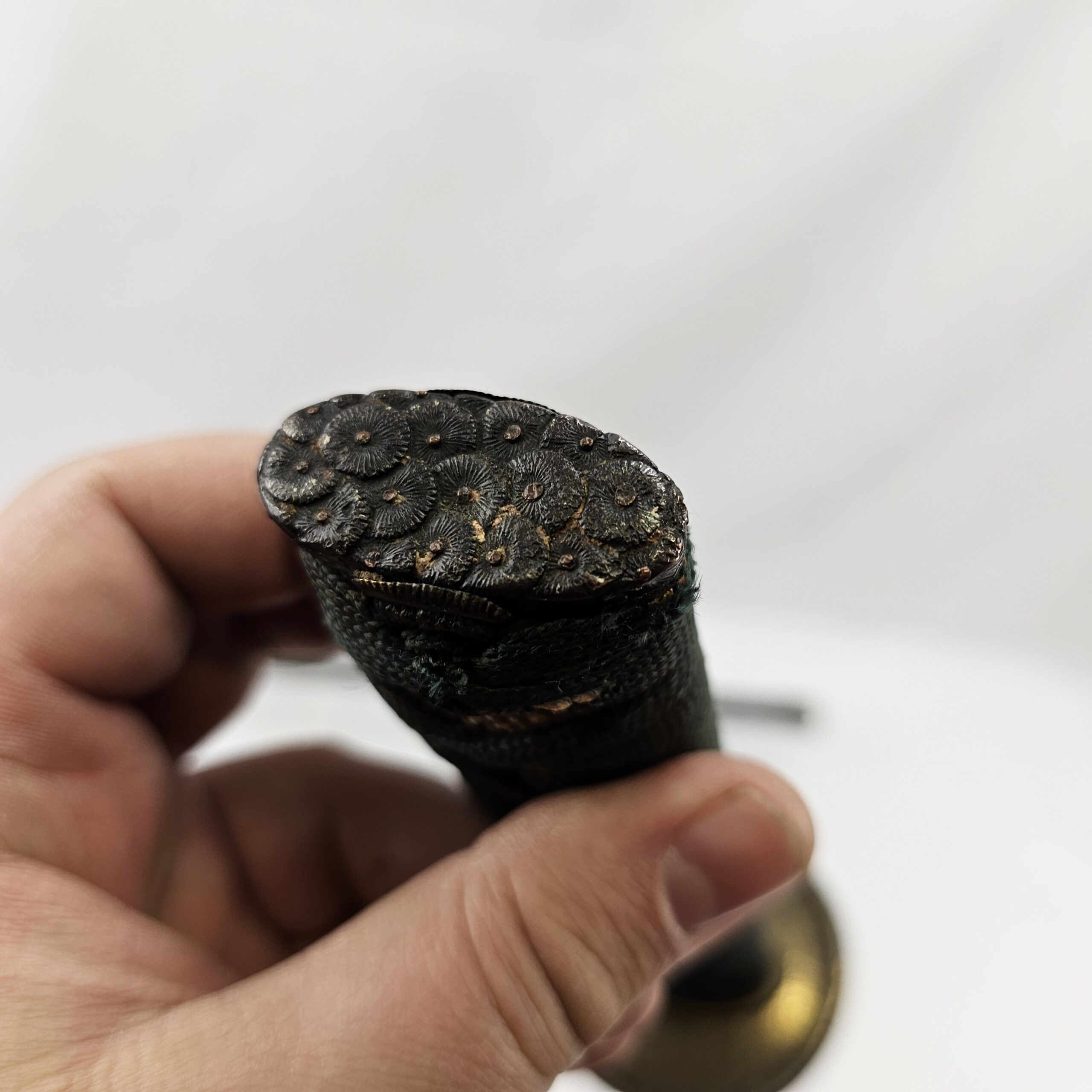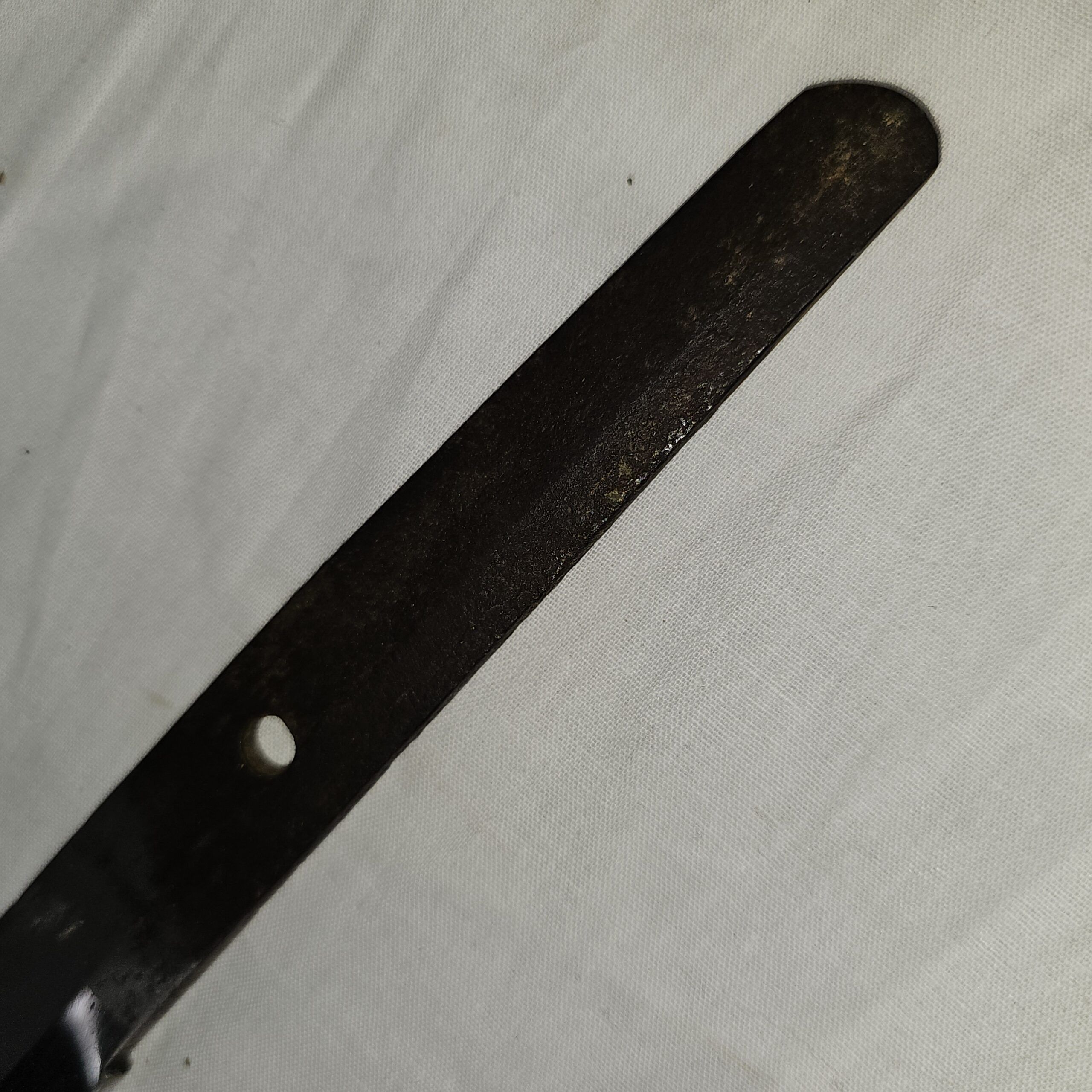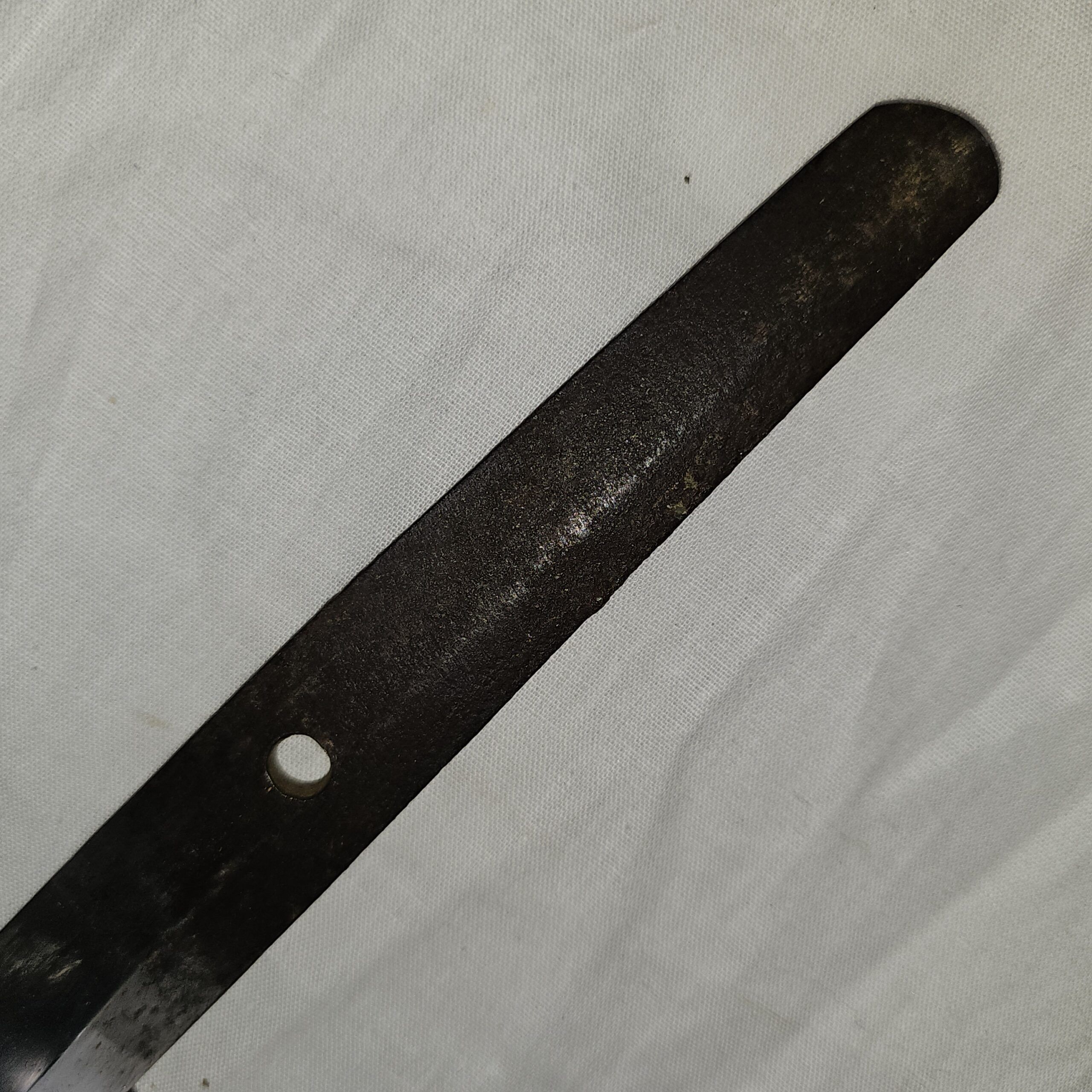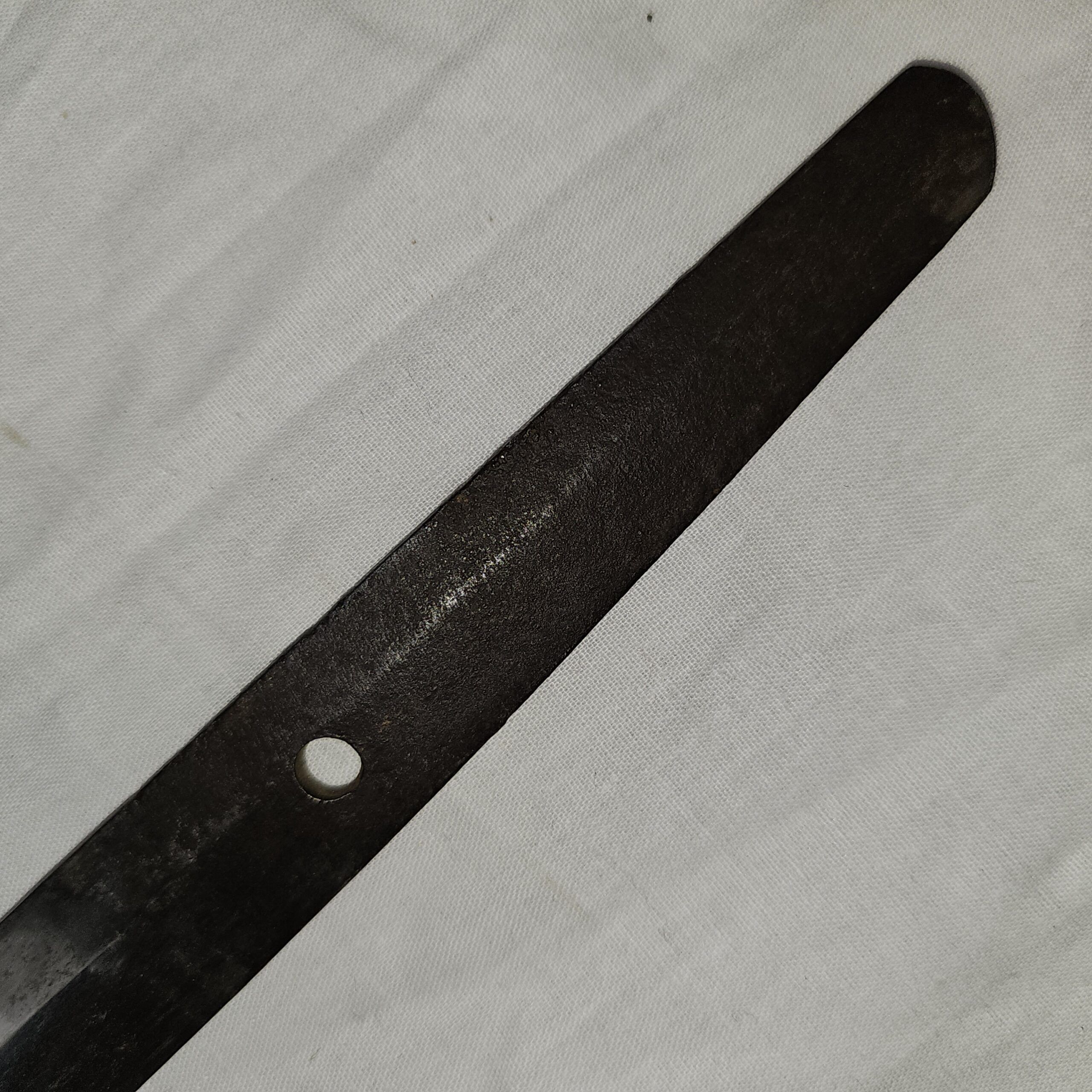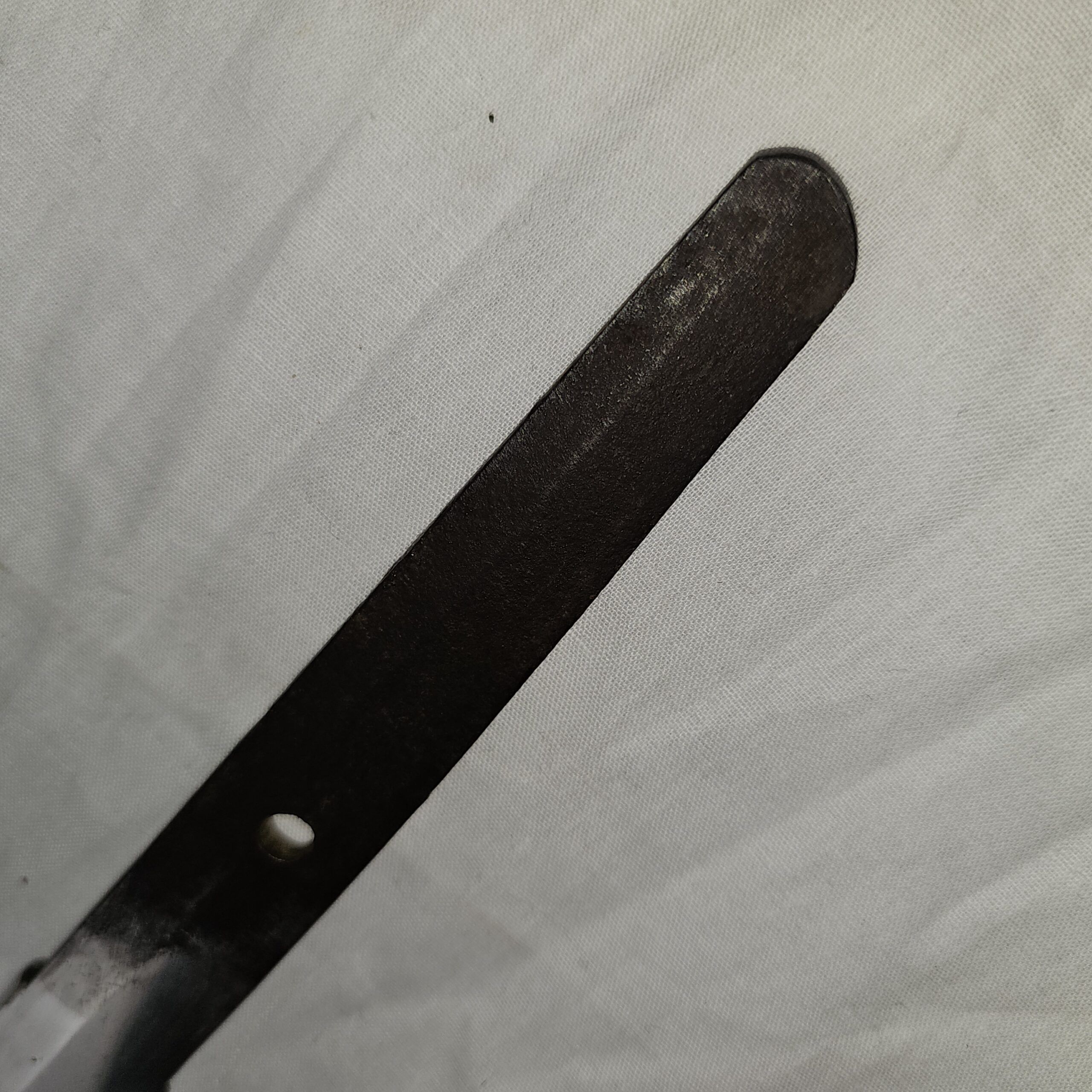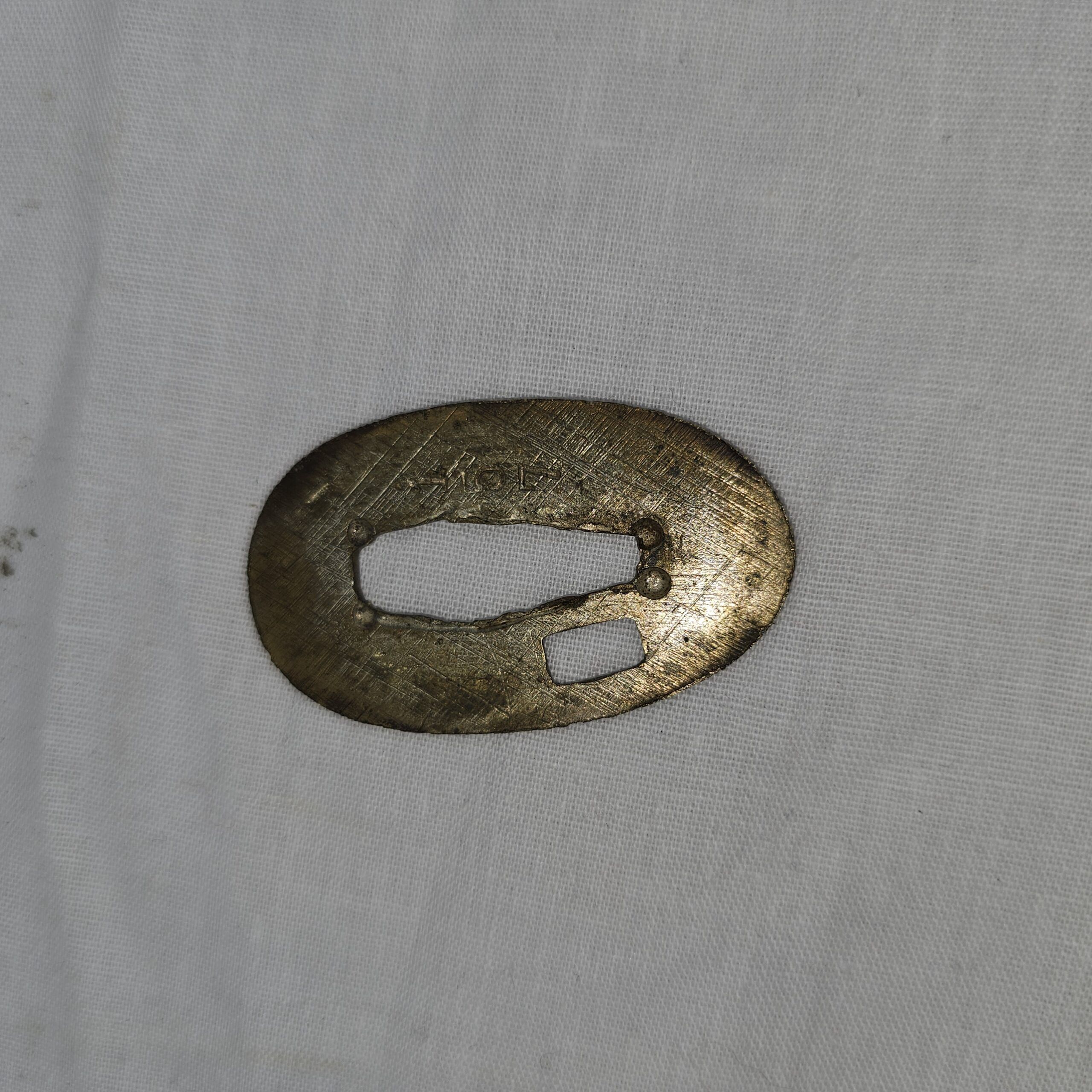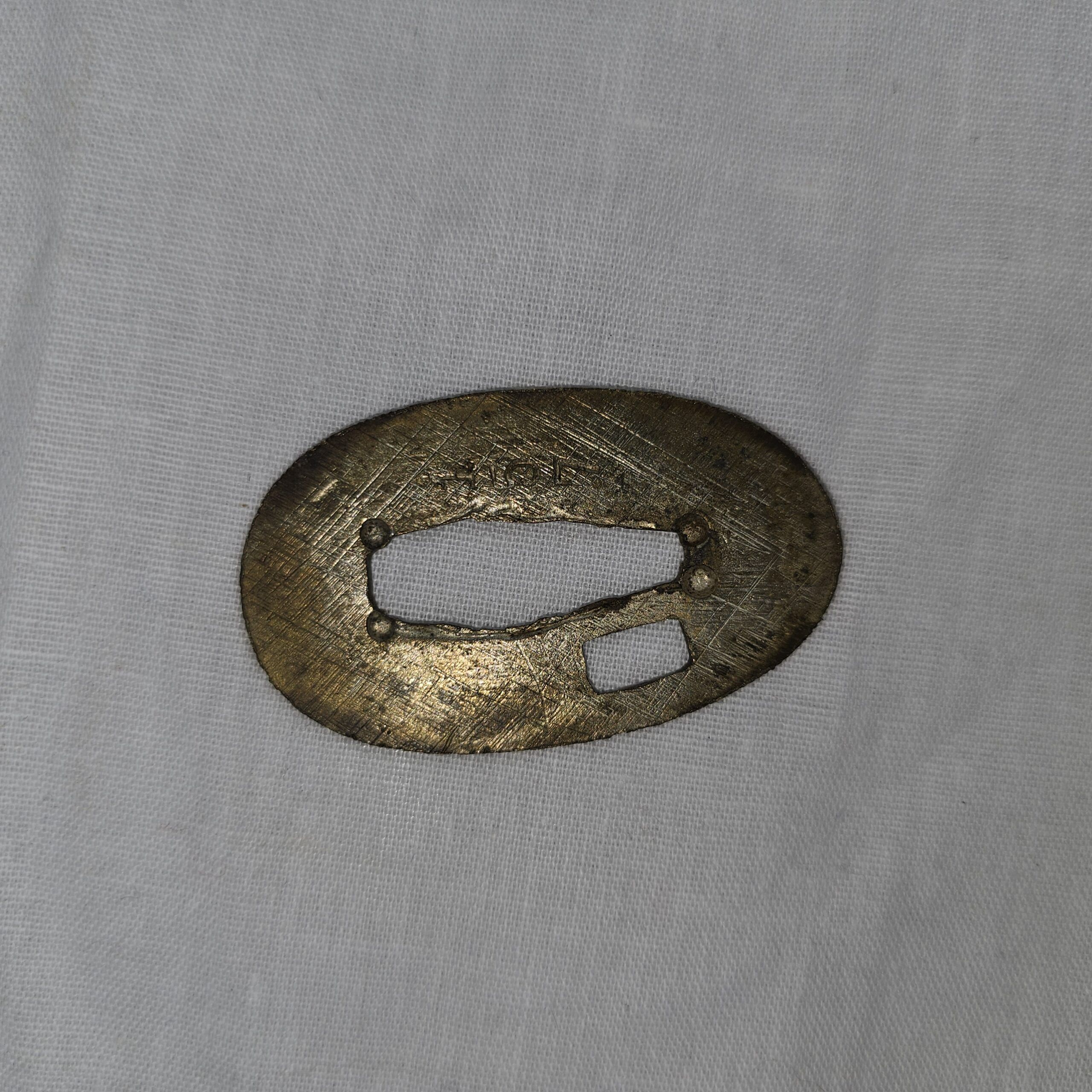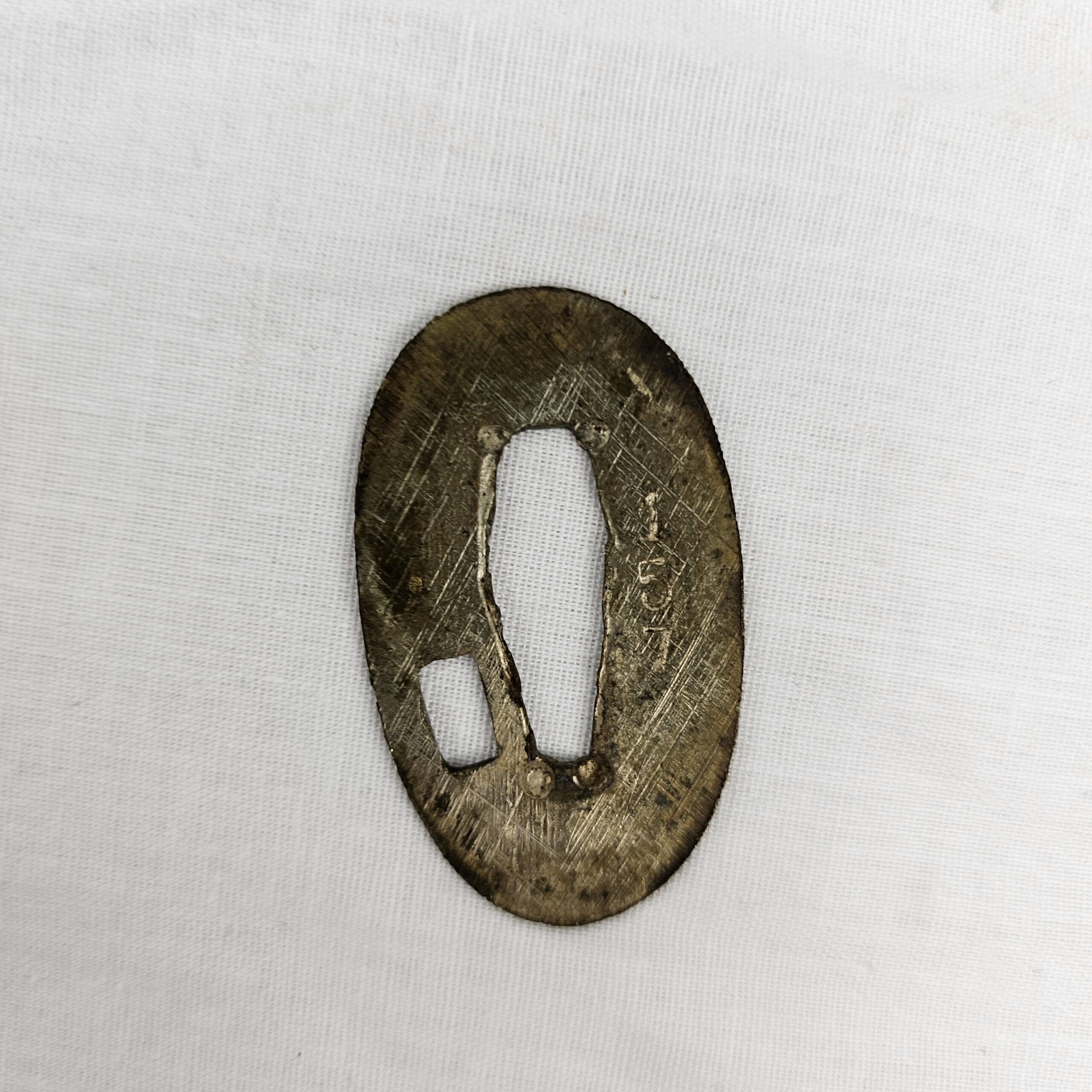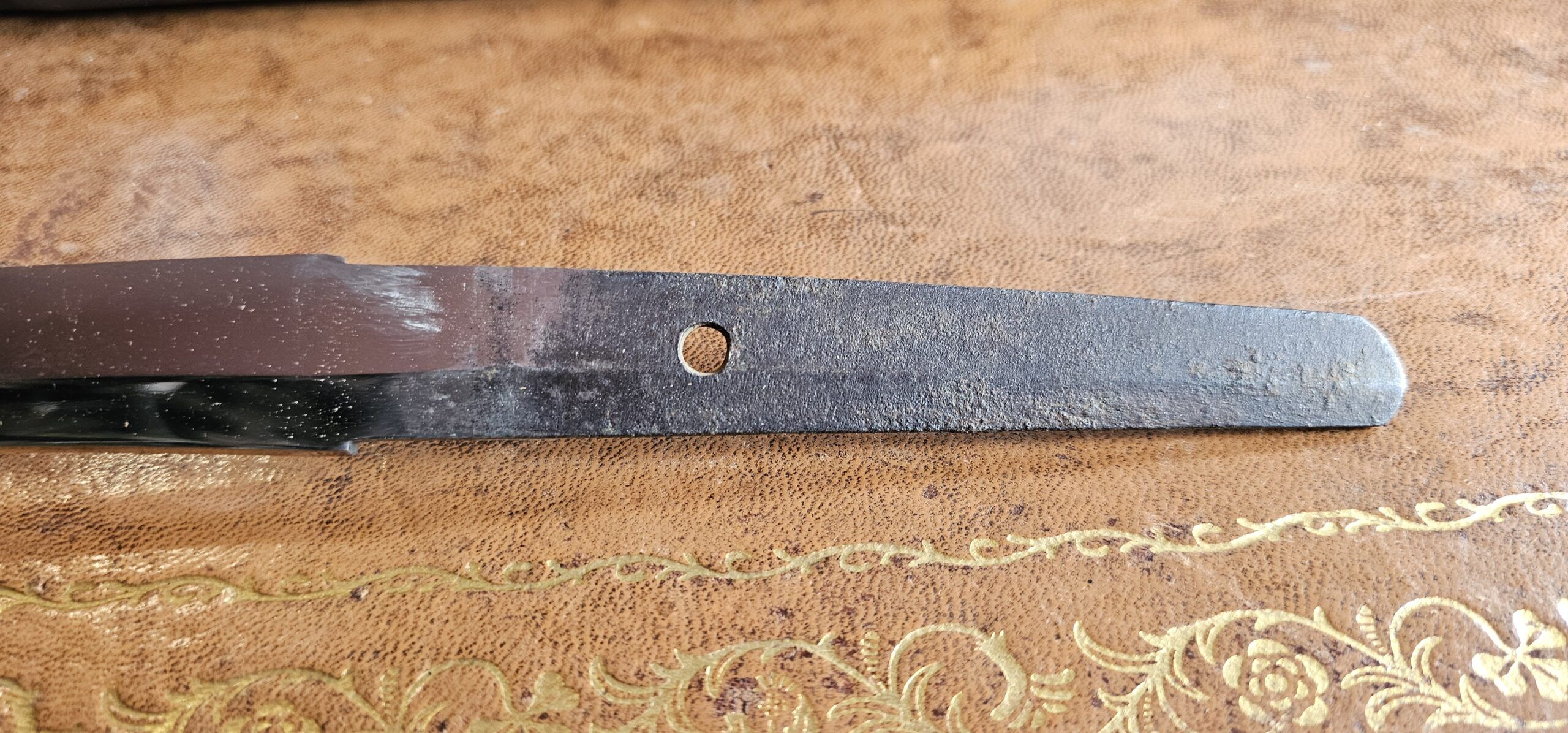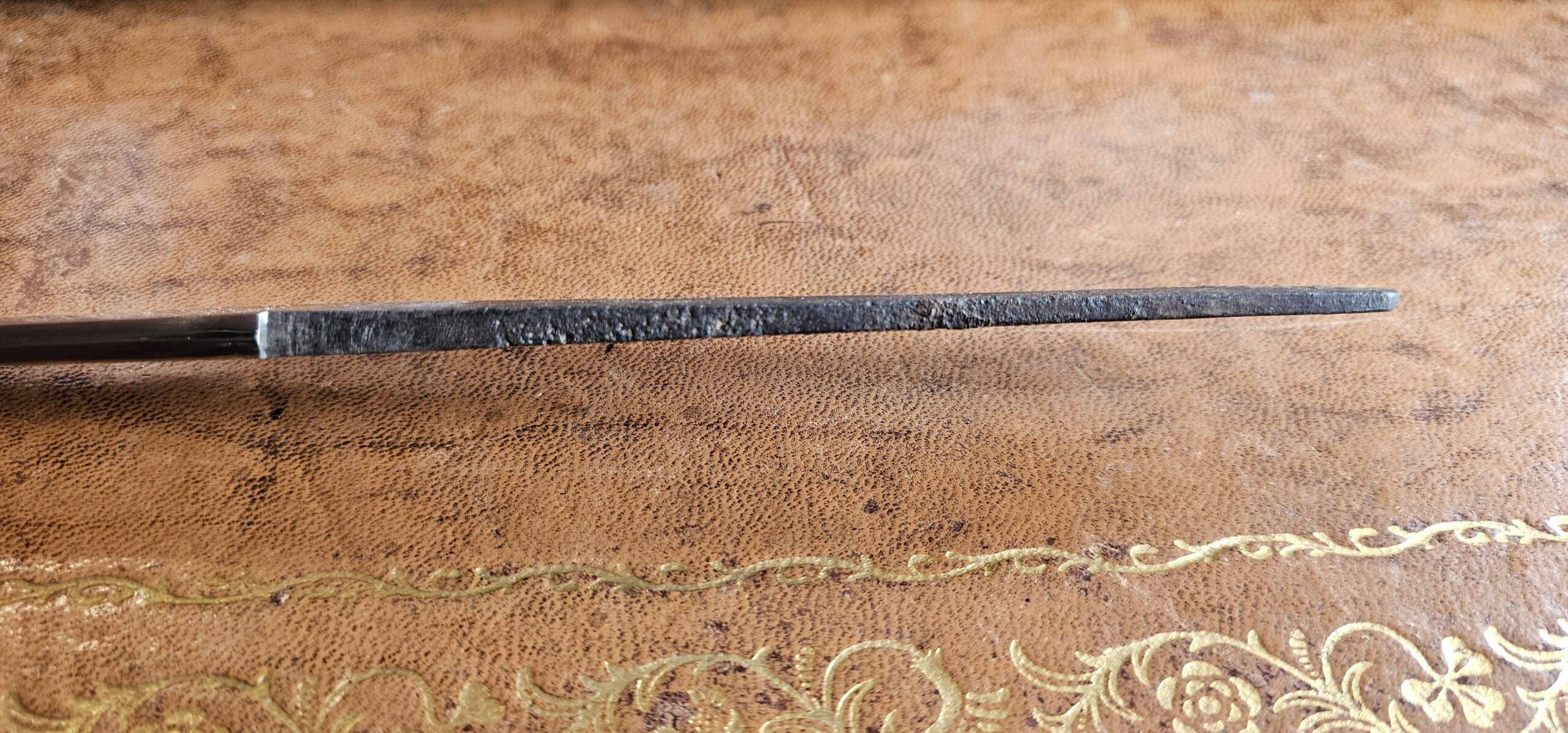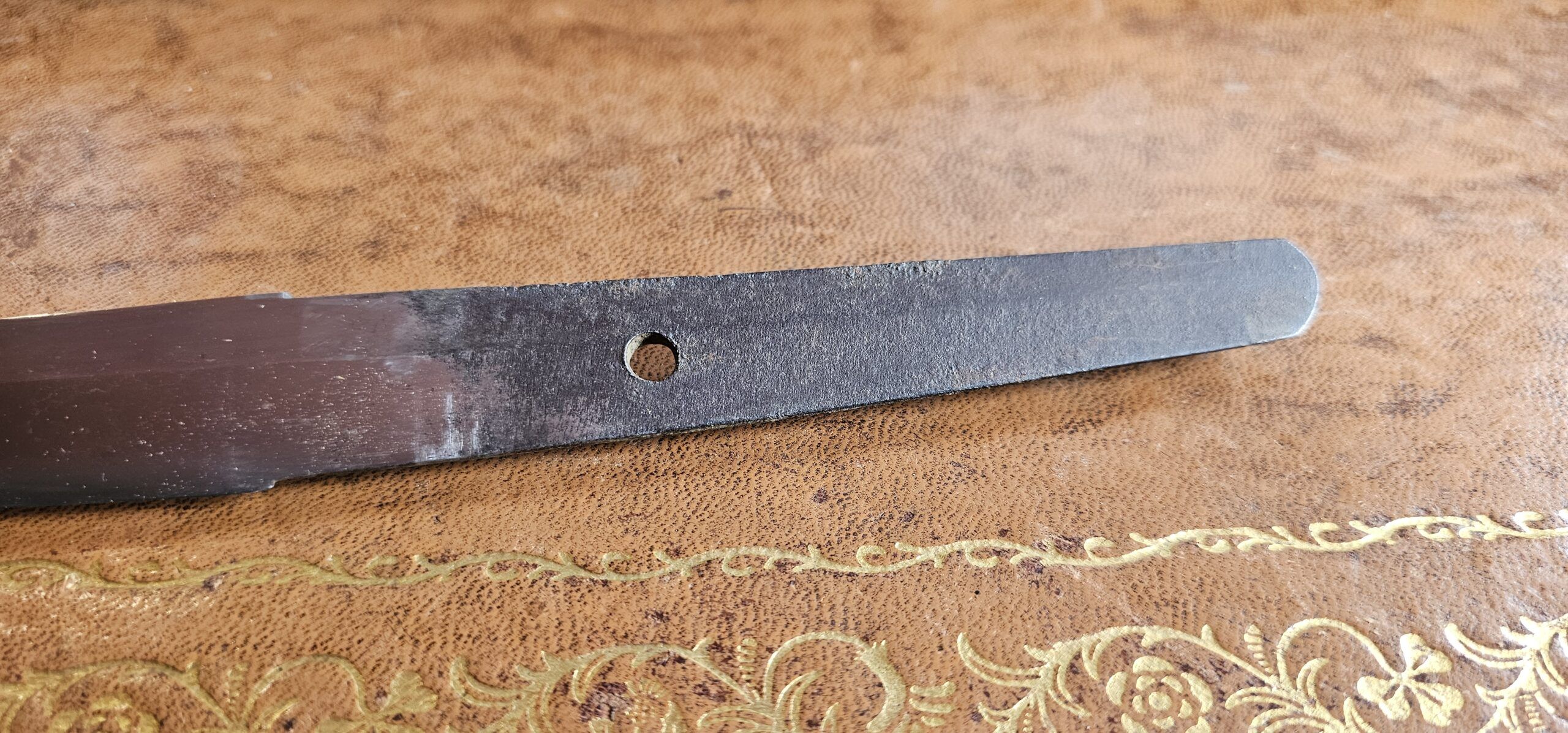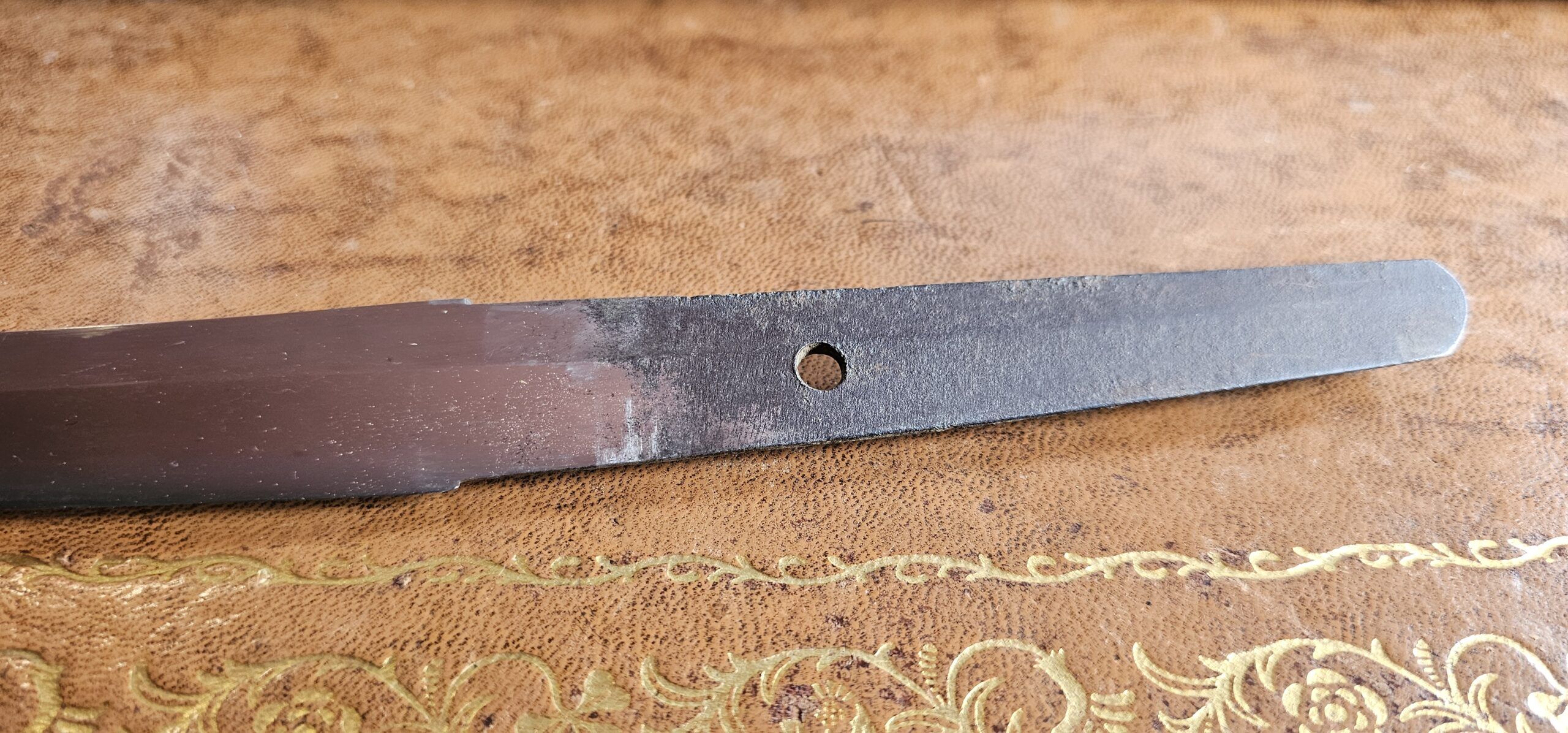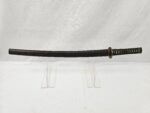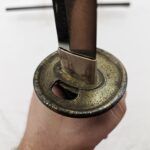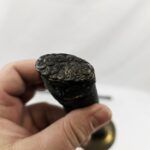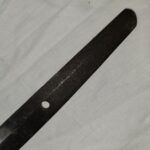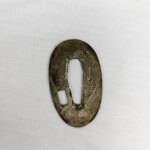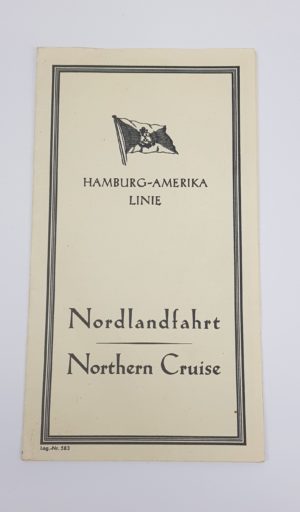~ An Edo Period Japanese Wakizashi Samurai Sword ~
A very interesting piece with a blade reminding of the Muromashi Kamakura and Muromachi periods, this Edo sword has been forged with a Funagata nakago (tank) shaped in the Haagari style with the yasurime (tang fiel marks) in the Katte-Sagari pattern.
The blade is a shinogi-zukuri with a chu (medium) tip.
The boshi pattern is not visible anymore but the hamon is made in the midare style.
The hada (the grain) is of a mokume style.
There is visible hatari (activities) on the entire surface of the blade.
The Tsuba is made of a copper alloy with what seems to be a steel layer on top and intricate gold inlay.
All its fittings are from the same period.
The scabbard seems so be shingunto period one.
Overall an exceptional blade.
The wakizashi is a traditional Japanese short sword that was worn by the samurai class of feudal Japan. It is one of the most iconic weapons of the samurai, often paired with the katana in what is known as the daishō, which symbolizes the social power and personal honor of the samurai. The wakizashi served not only as a backup weapon but also had practical uses in close quarters where a longer blade like the katana would be less effective. Its role and significance extend beyond just being a weapon, embodying deep cultural and spiritual values.
Design and Features
- Length: The blade length of a wakizashi typically ranges from 30 to 60 centimeters (about 12 to 24 inches), making it significantly shorter than the katana but longer than a tantō.
- Construction: Like the katana, wakizashi are forged using traditional Japanese swordsmithing techniques, involving the folding and hammering of the steel to create a blade that is both hard and flexible.
- Appearance: The wakizashi often mirrors the style and decoration of the katana it accompanies, with a similar curve and single-edged design. The hilt and guard can be ornately decorated, reflecting the status and preferences of its owner.
Historical and Cultural Significance
- Social Status: During the Edo period (1603–1868), the daishō (the pairing of the katana and wakizashi) became the symbol of the samurai class. Only samurai were permitted to wear both swords as an indication of their status and privilege.
- Practical Uses: Beyond its use as a secondary weapon, the wakizashi could be worn at all times and was therefore available for self-defense in residences or other places where the katana was too long to be practical. It was also used for the ritual suicide seppuku (more accurately called hara-kiri), as a matter of honor among samurai.
- Spiritual and Cultural Symbol: The wakizashi, along with other traditional Japanese swords, holds significant cultural and spiritual value, often being considered as possessing its own spirit or essence. Swords are revered in Shintō, the indigenous spirituality of Japan, and have been involved in various ceremonial practices.
Modern Times
In contemporary times, the wakizashi, like other Japanese swords, is celebrated for its craftsmanship, beauty, and historical value. Collectors and martial arts practitioners around the world seek authentic wakizashi for their collections or for use in iaido and other martial arts that include traditional swordsmanship. Despite the passage of centuries, the wakizashi remains a powerful symbol of the samurai ethos and Japanese cultural heritage.

